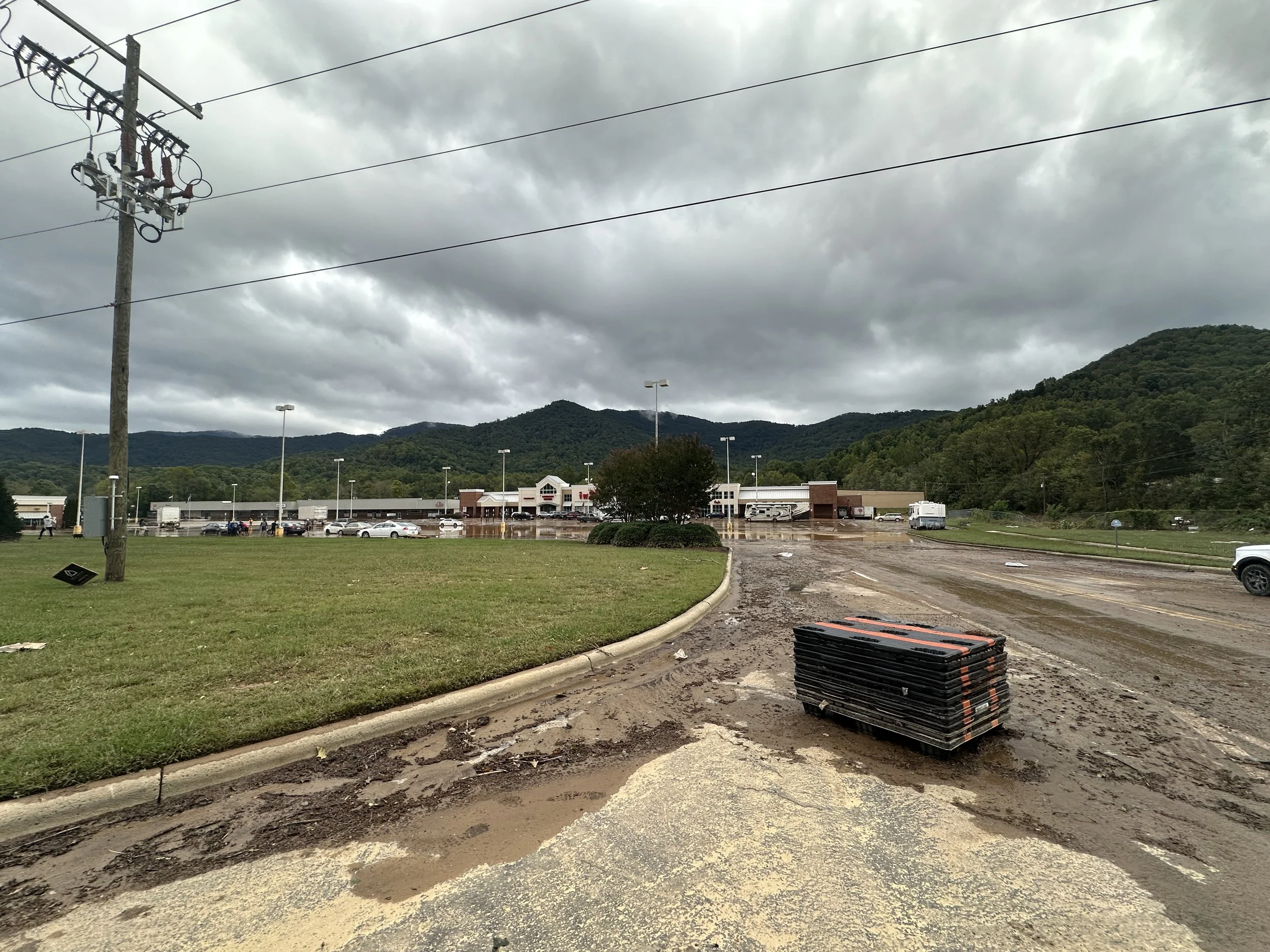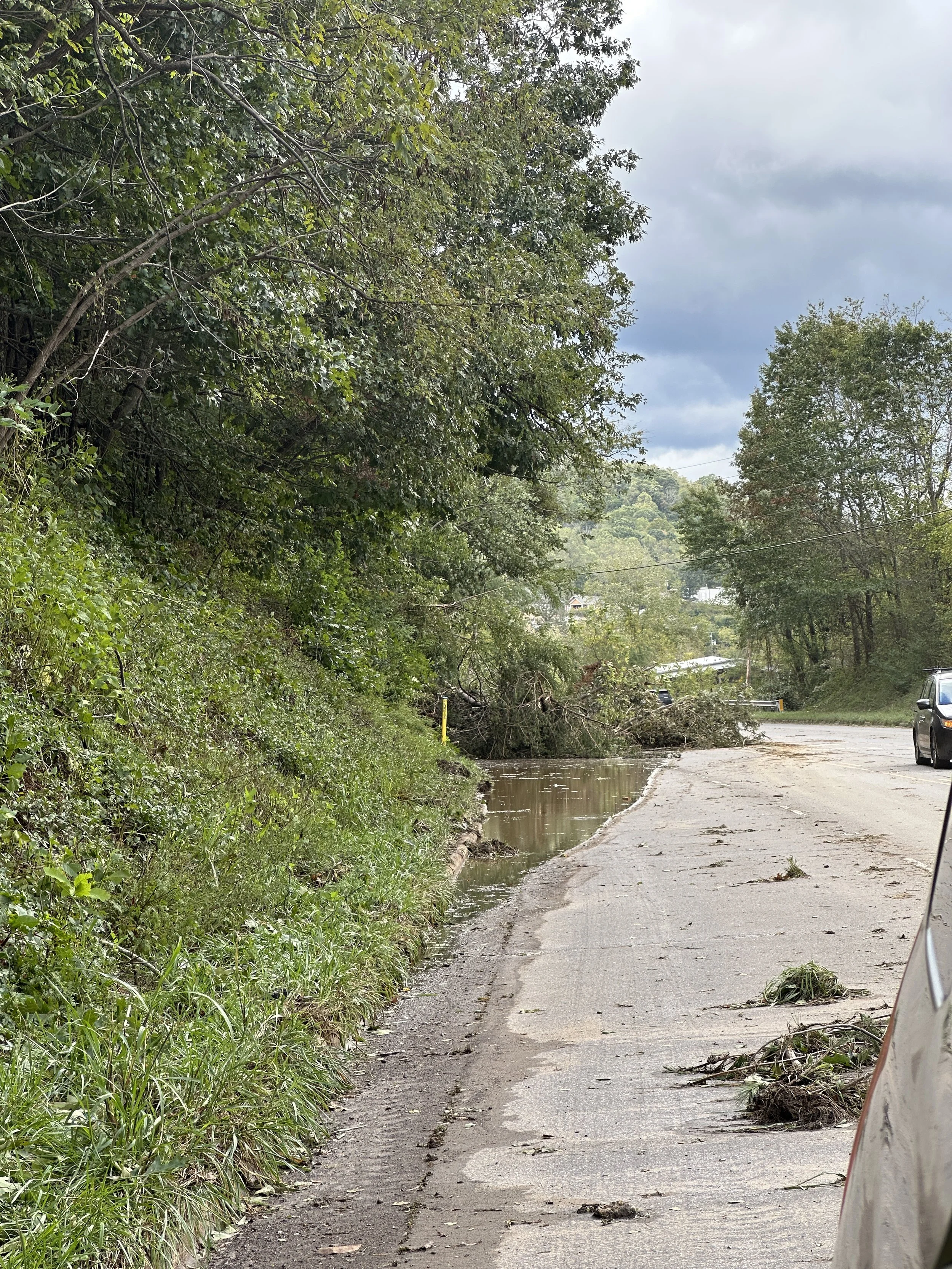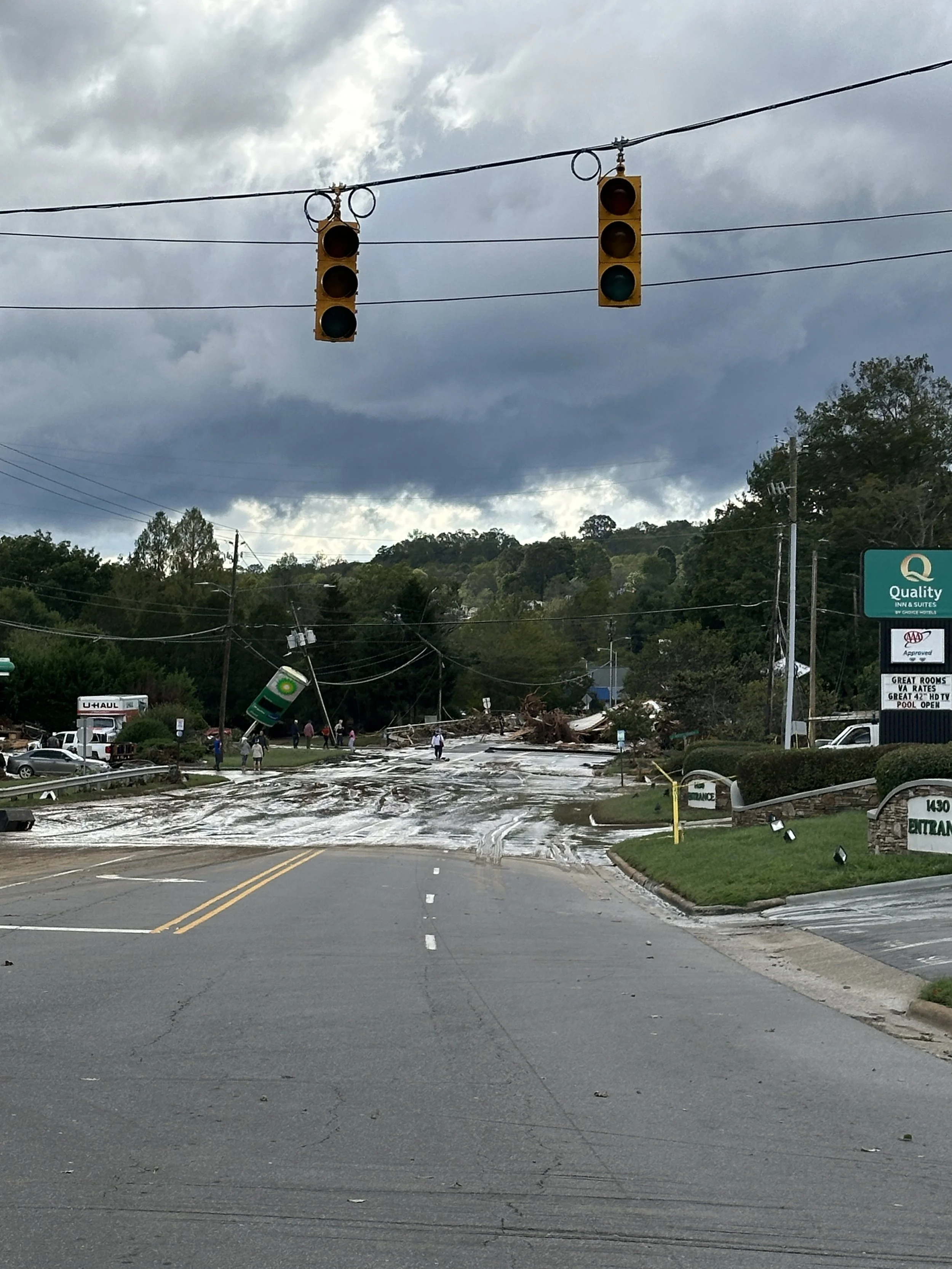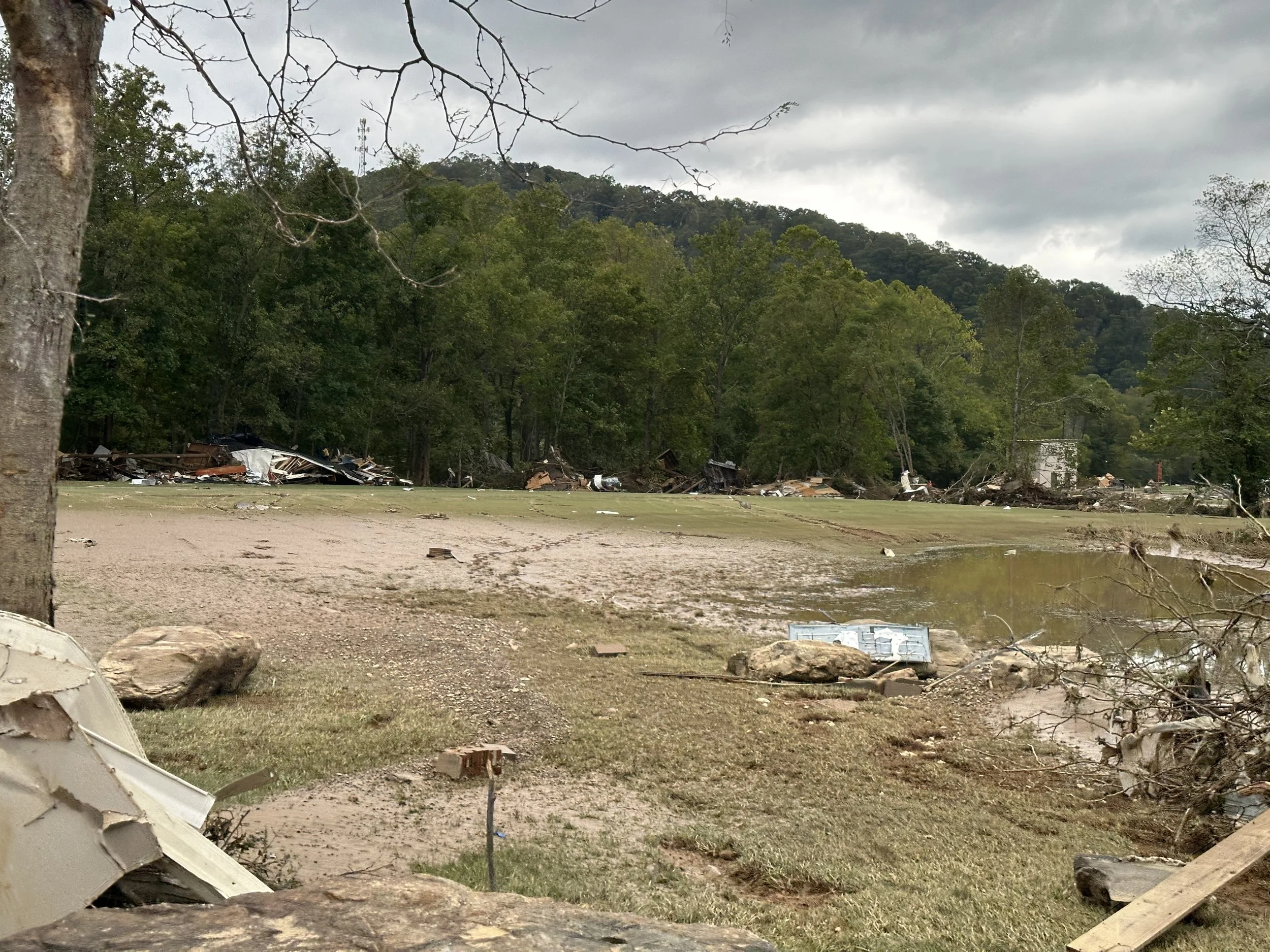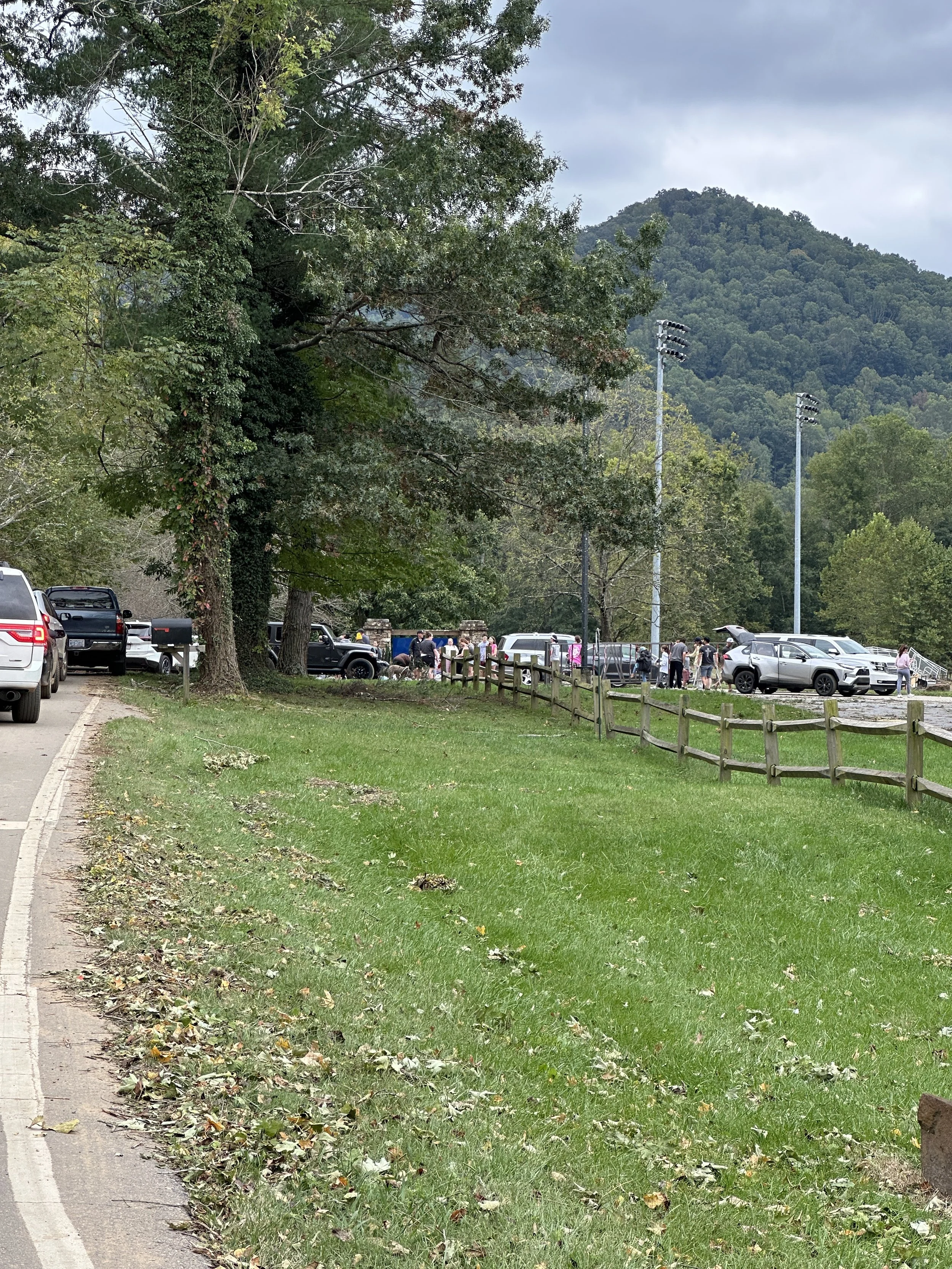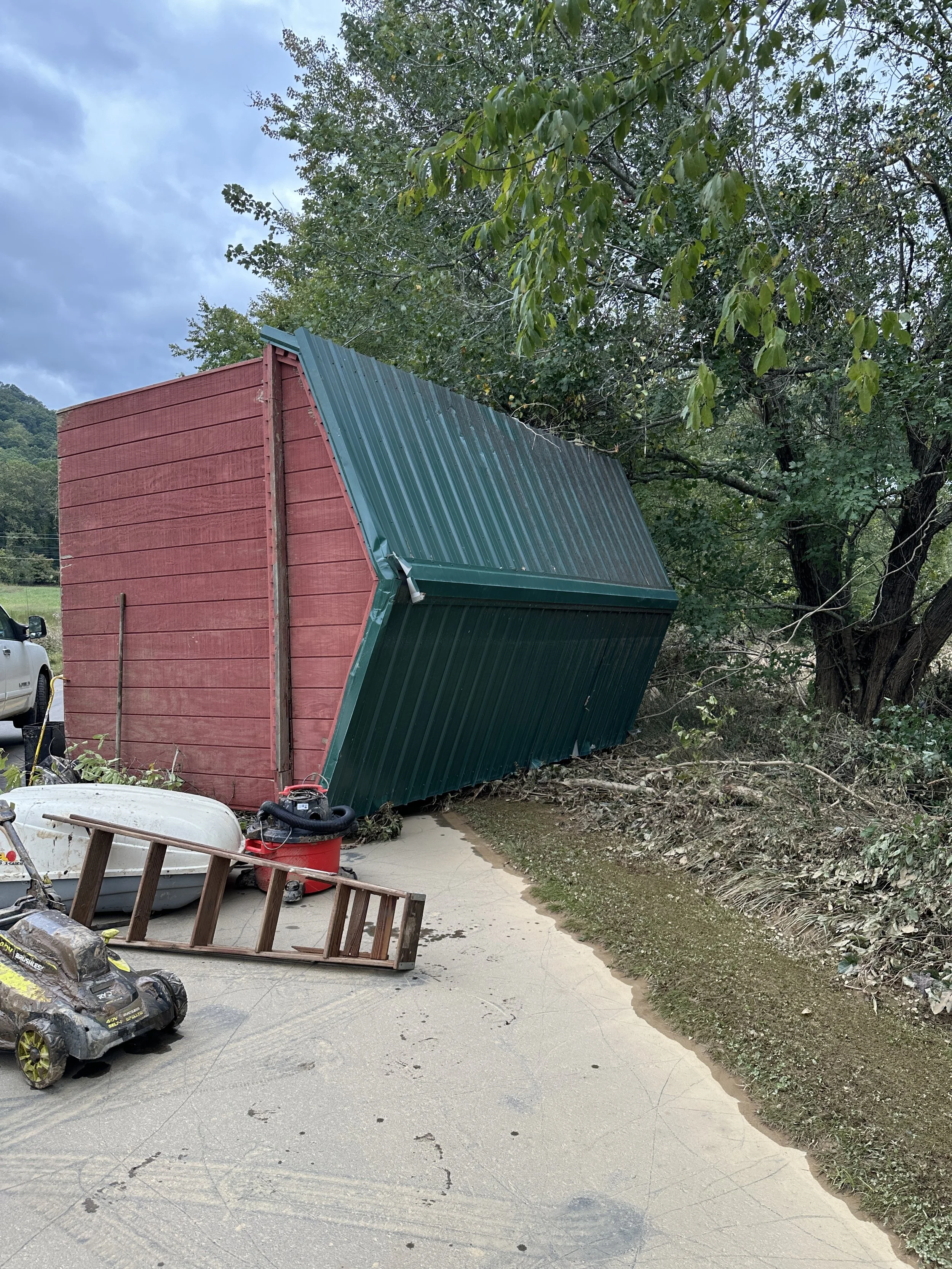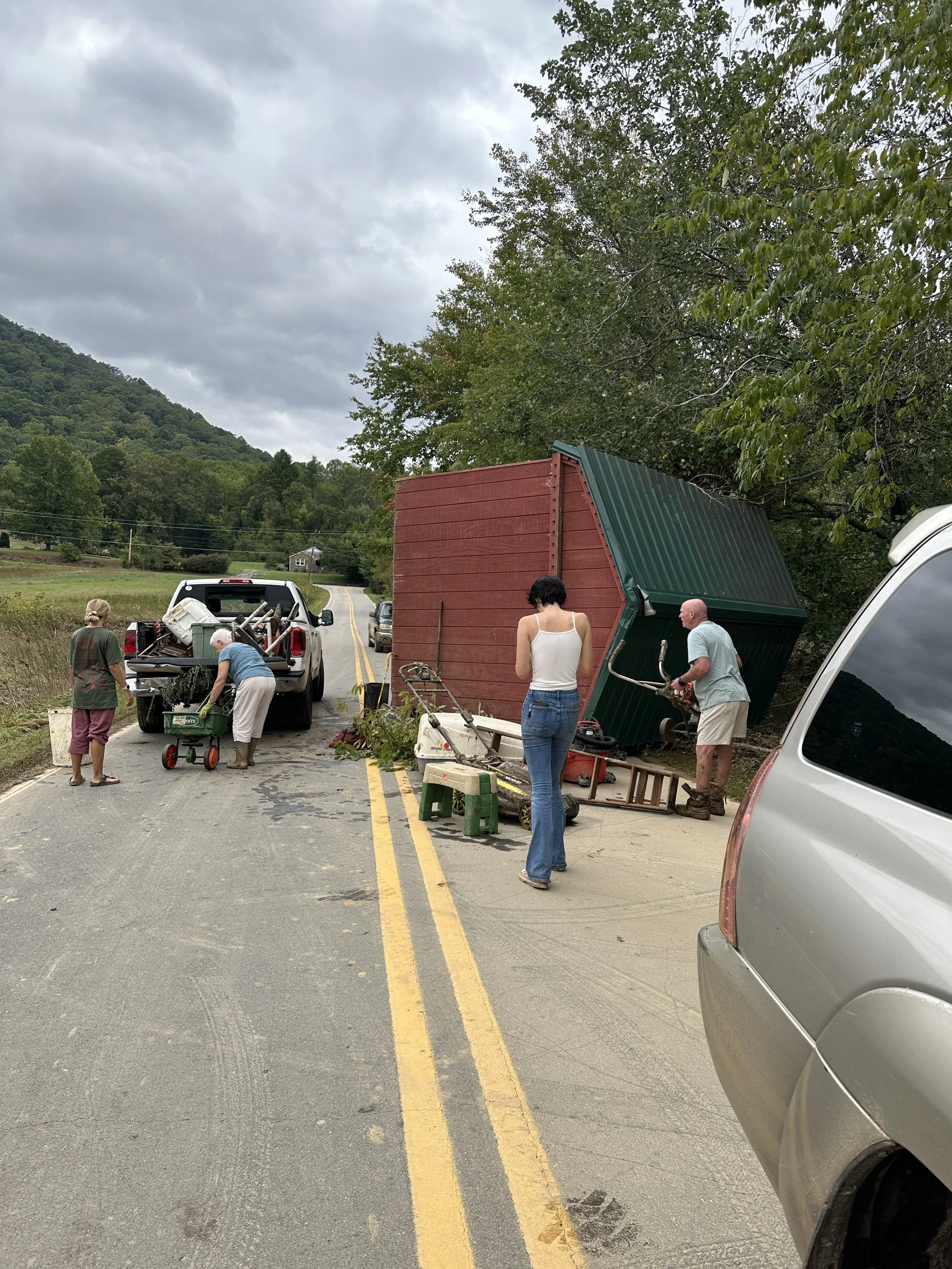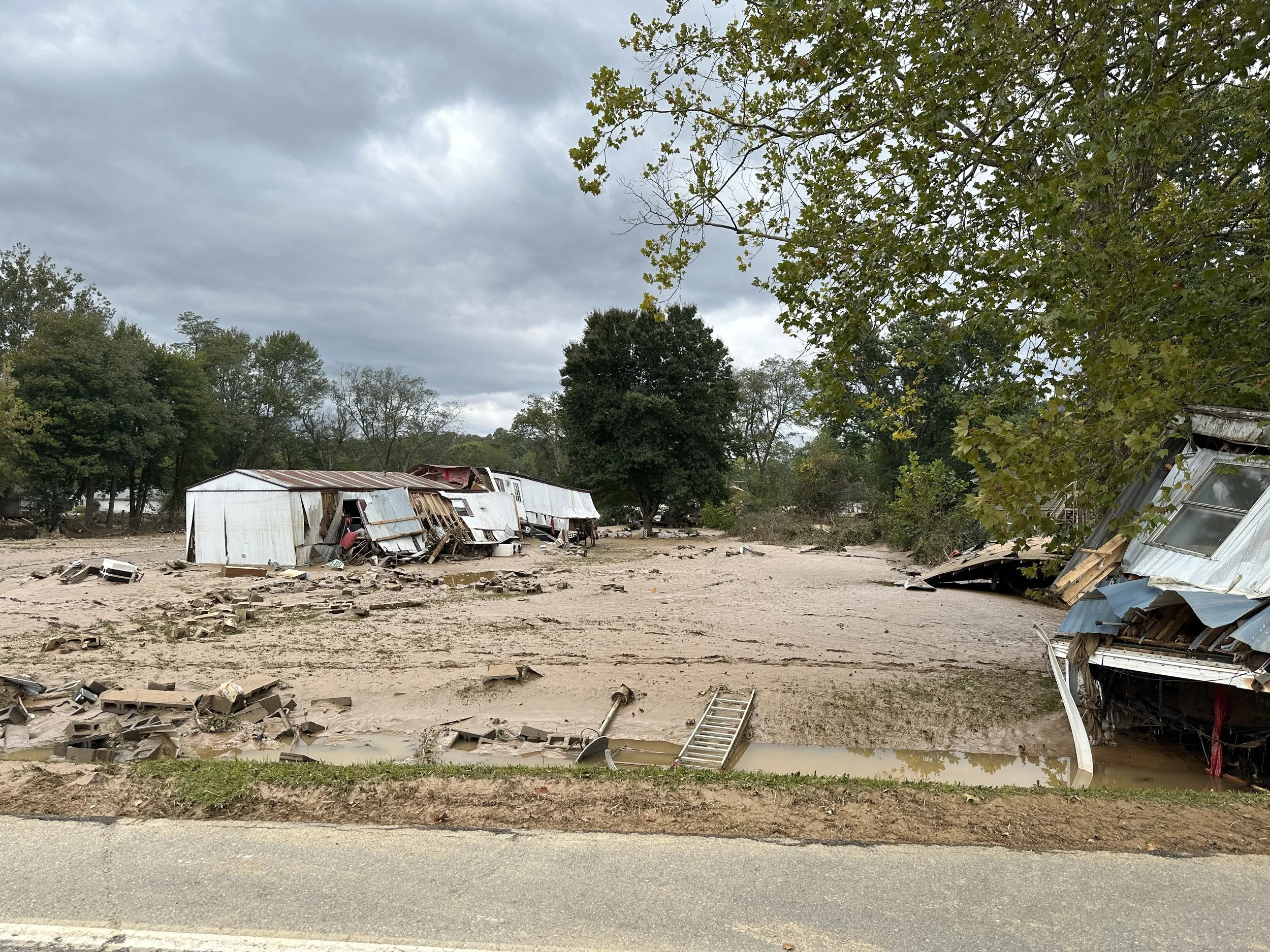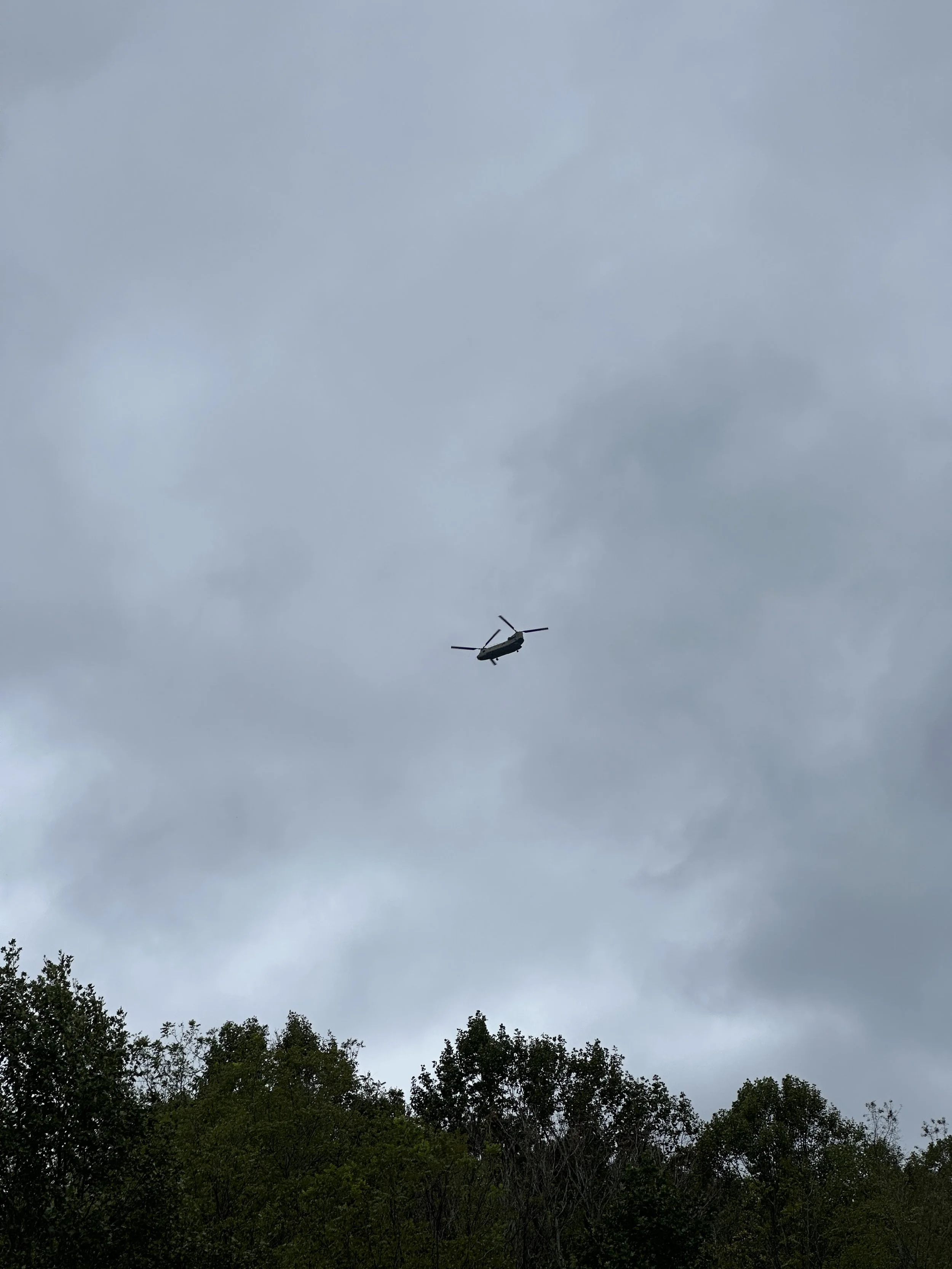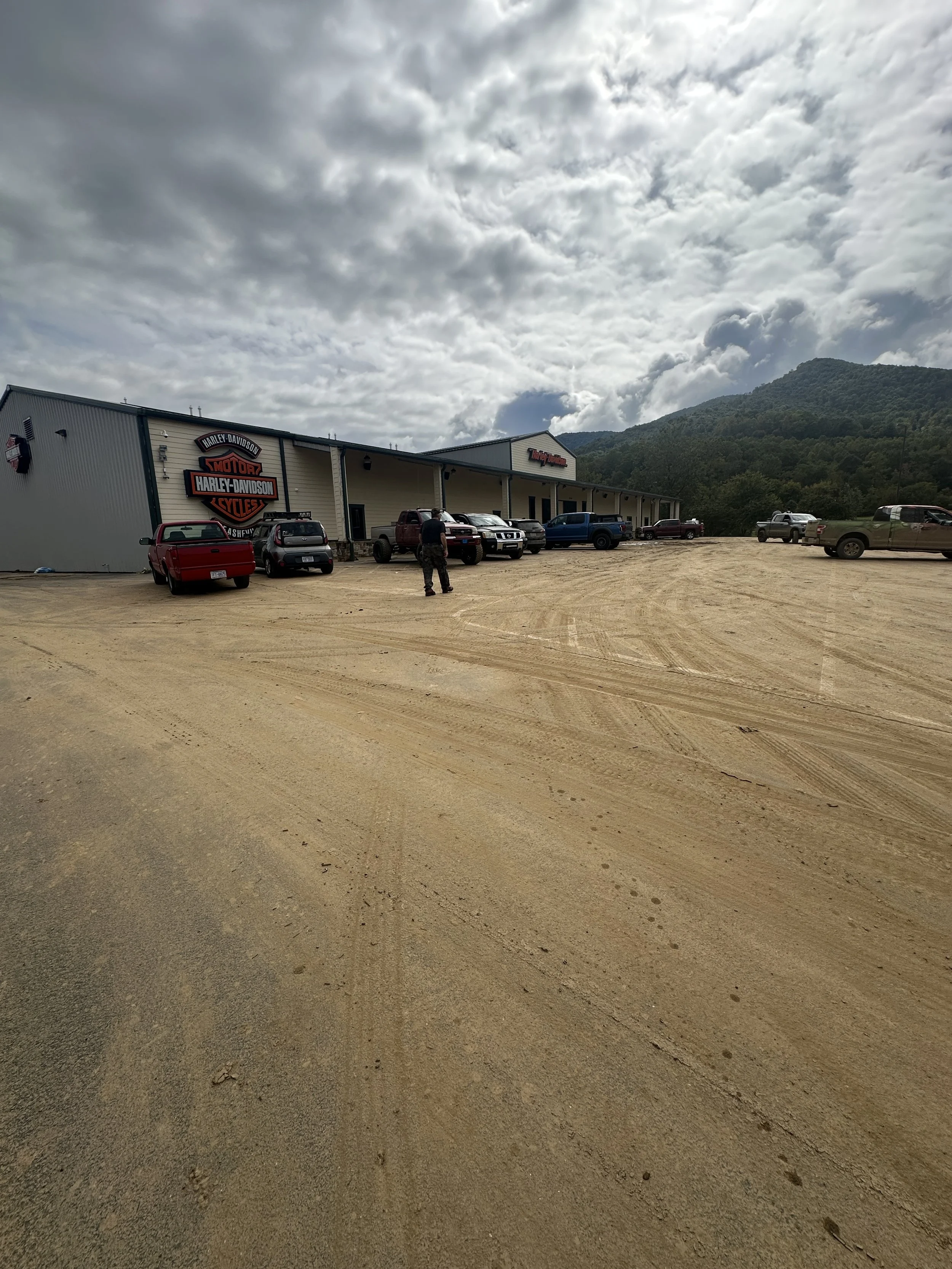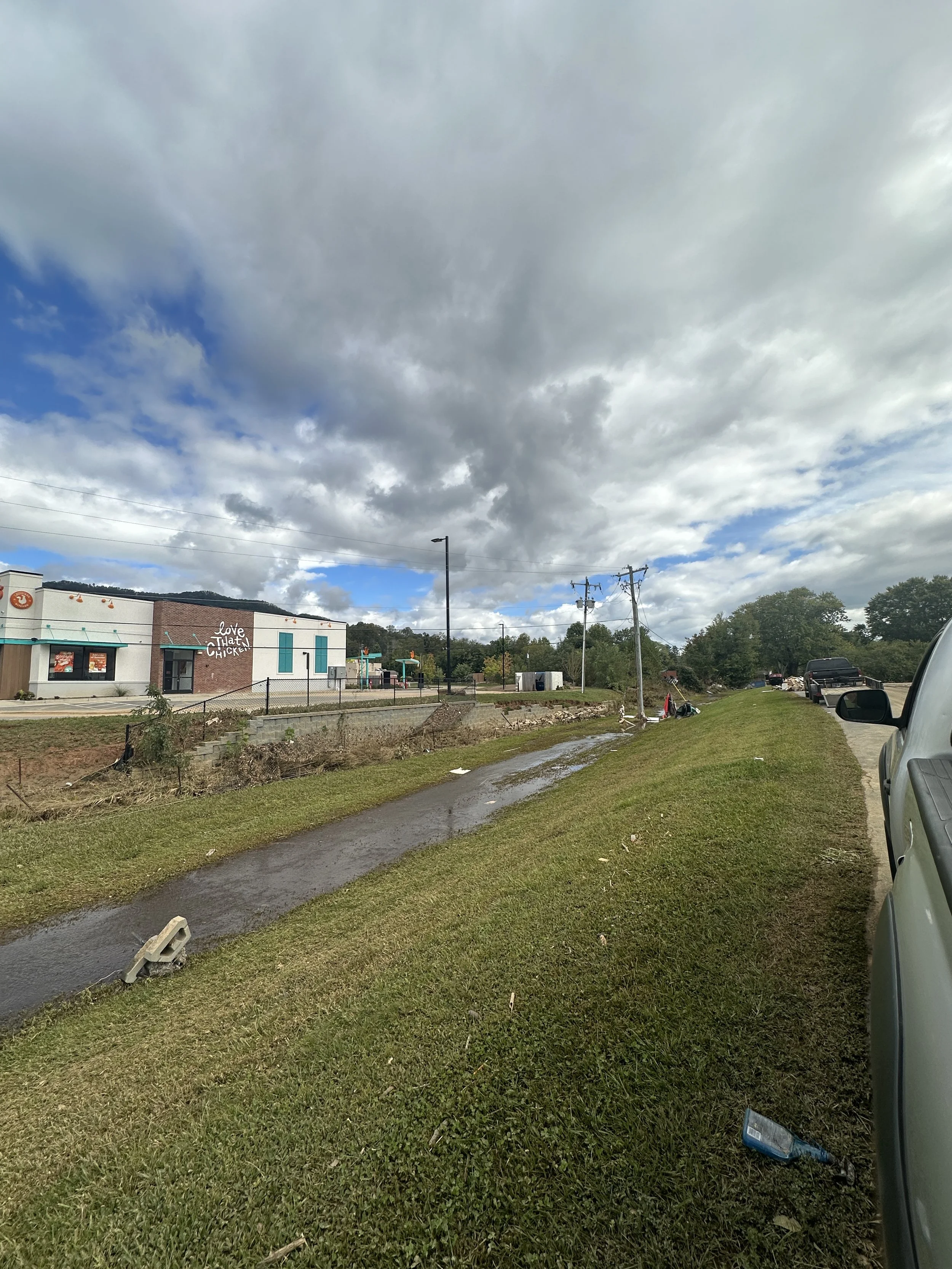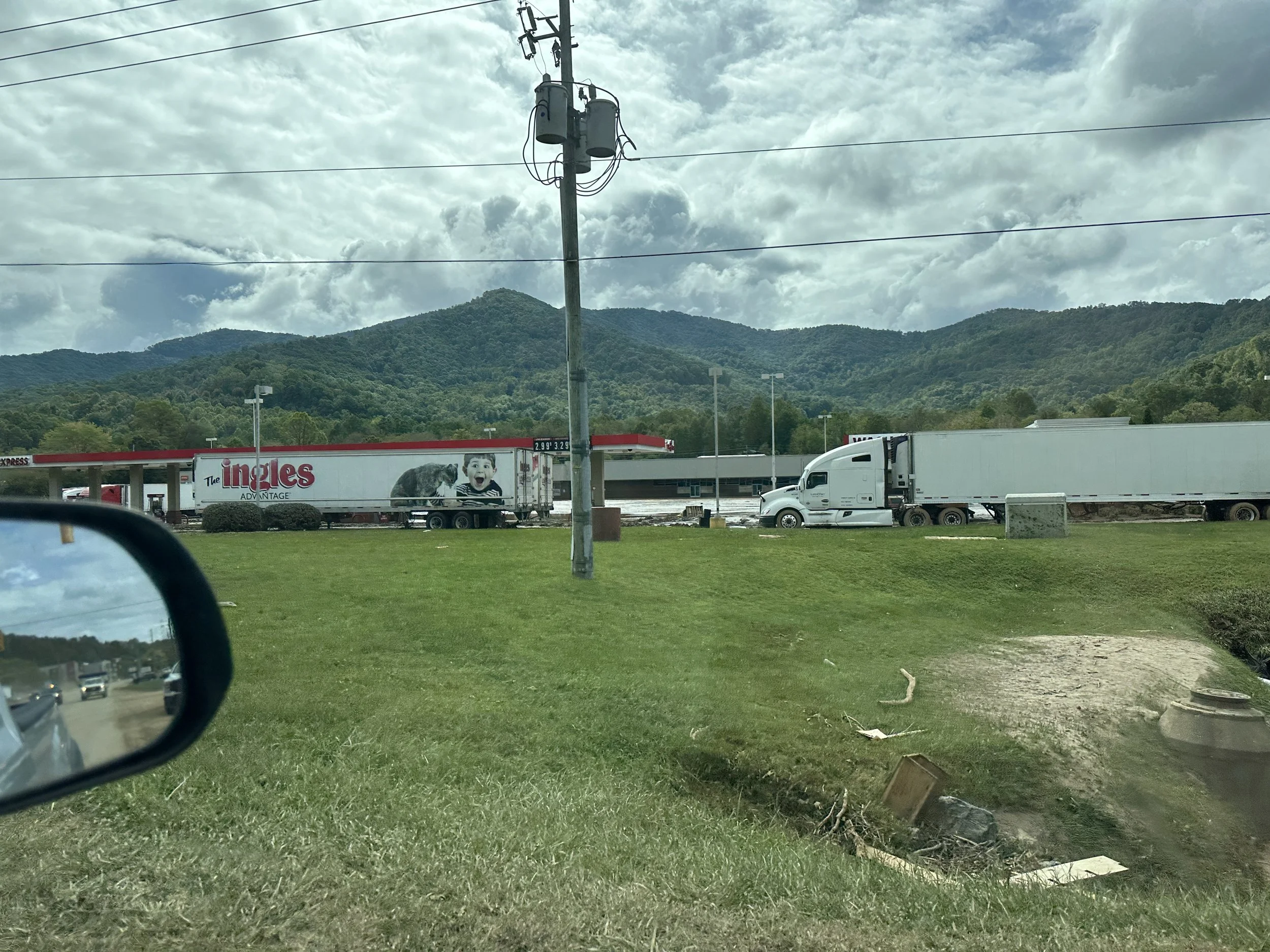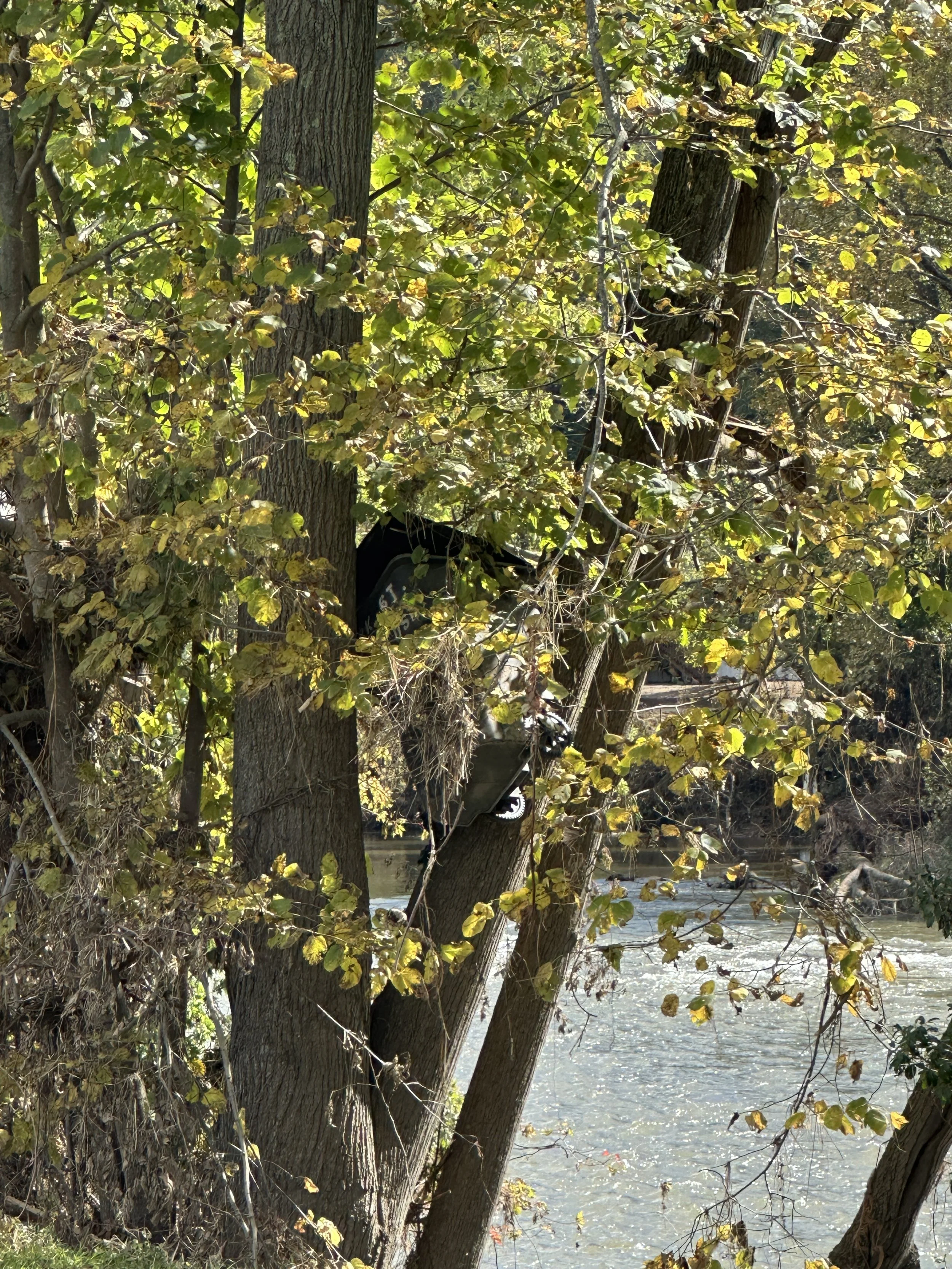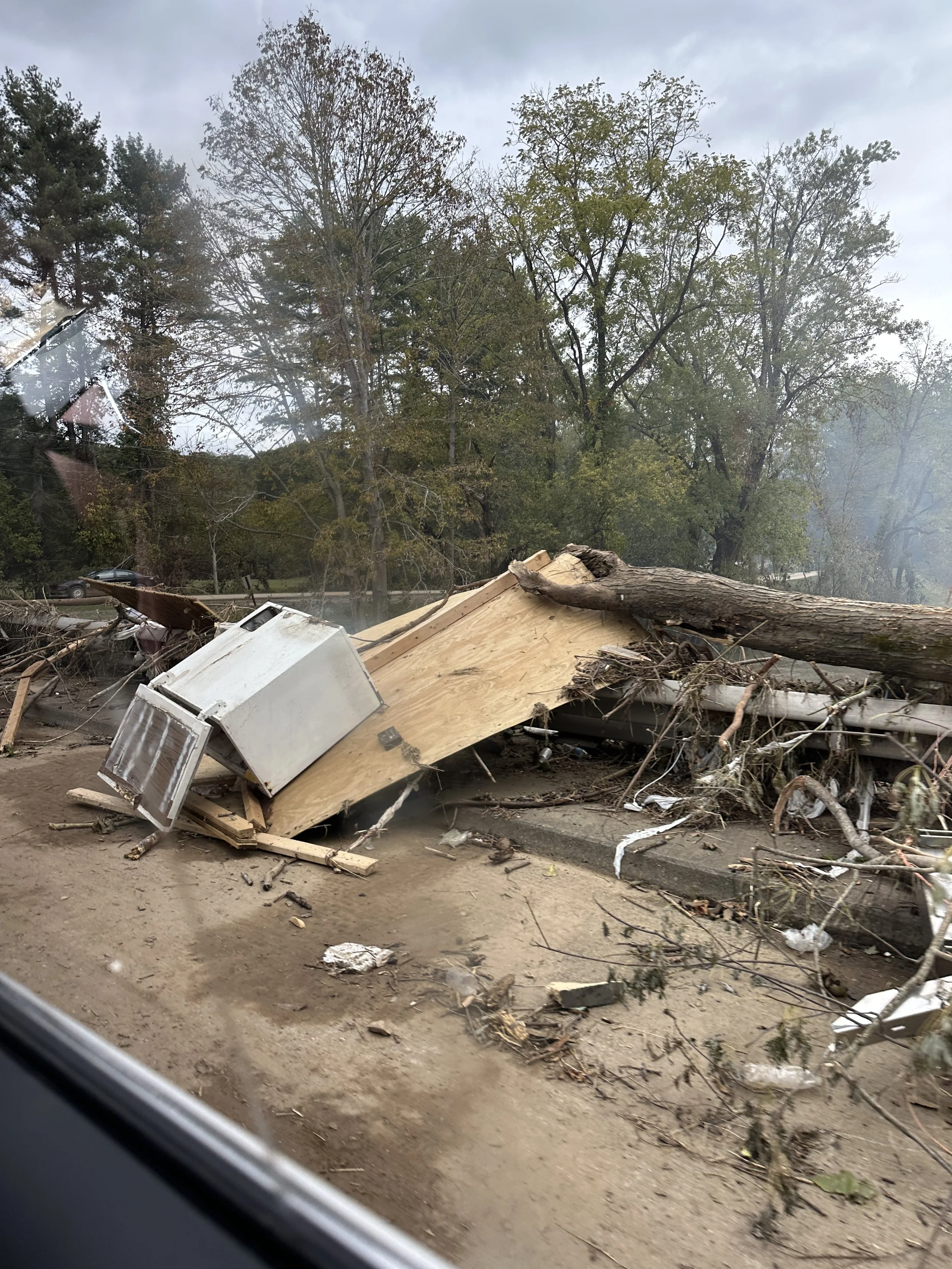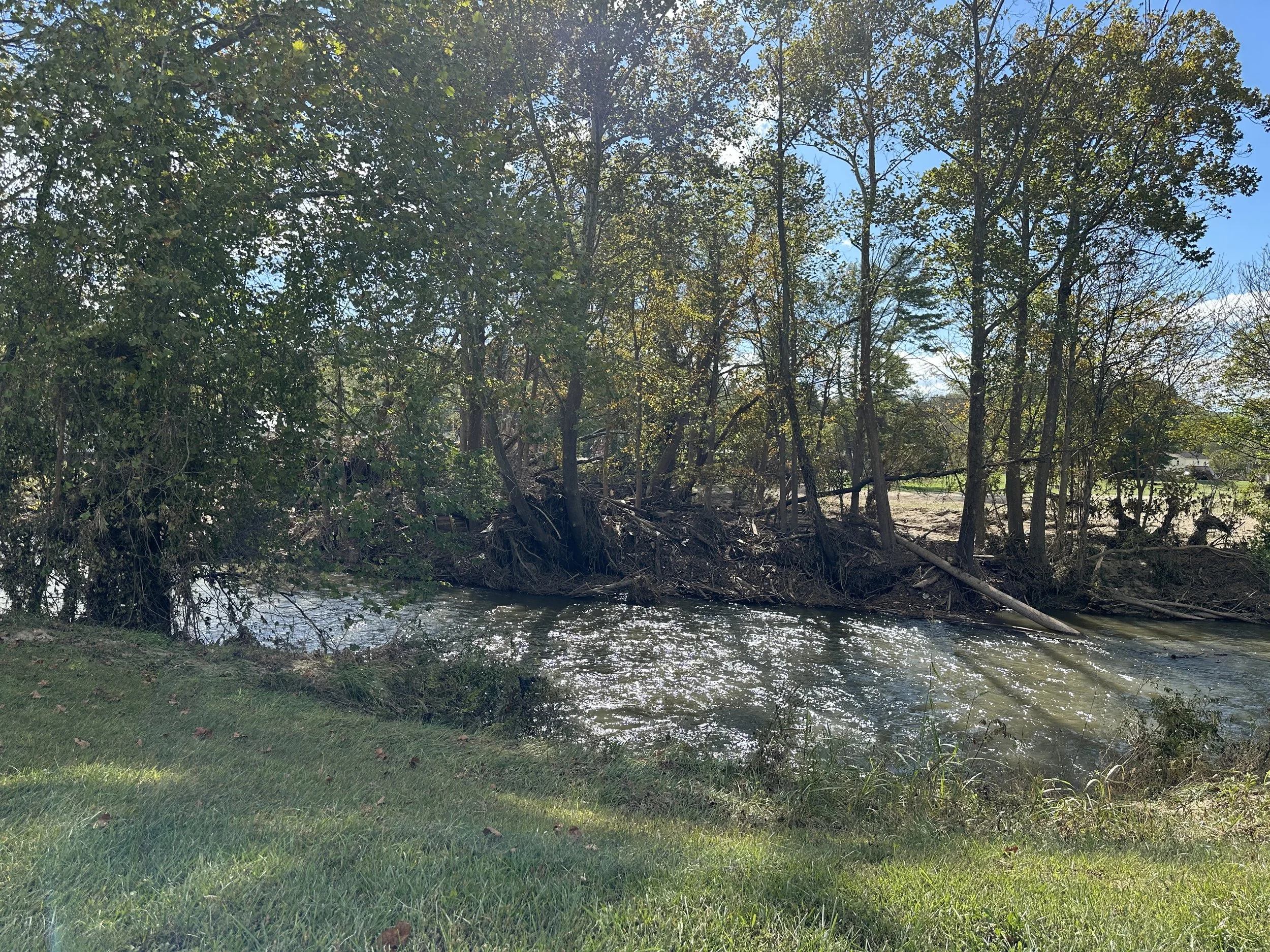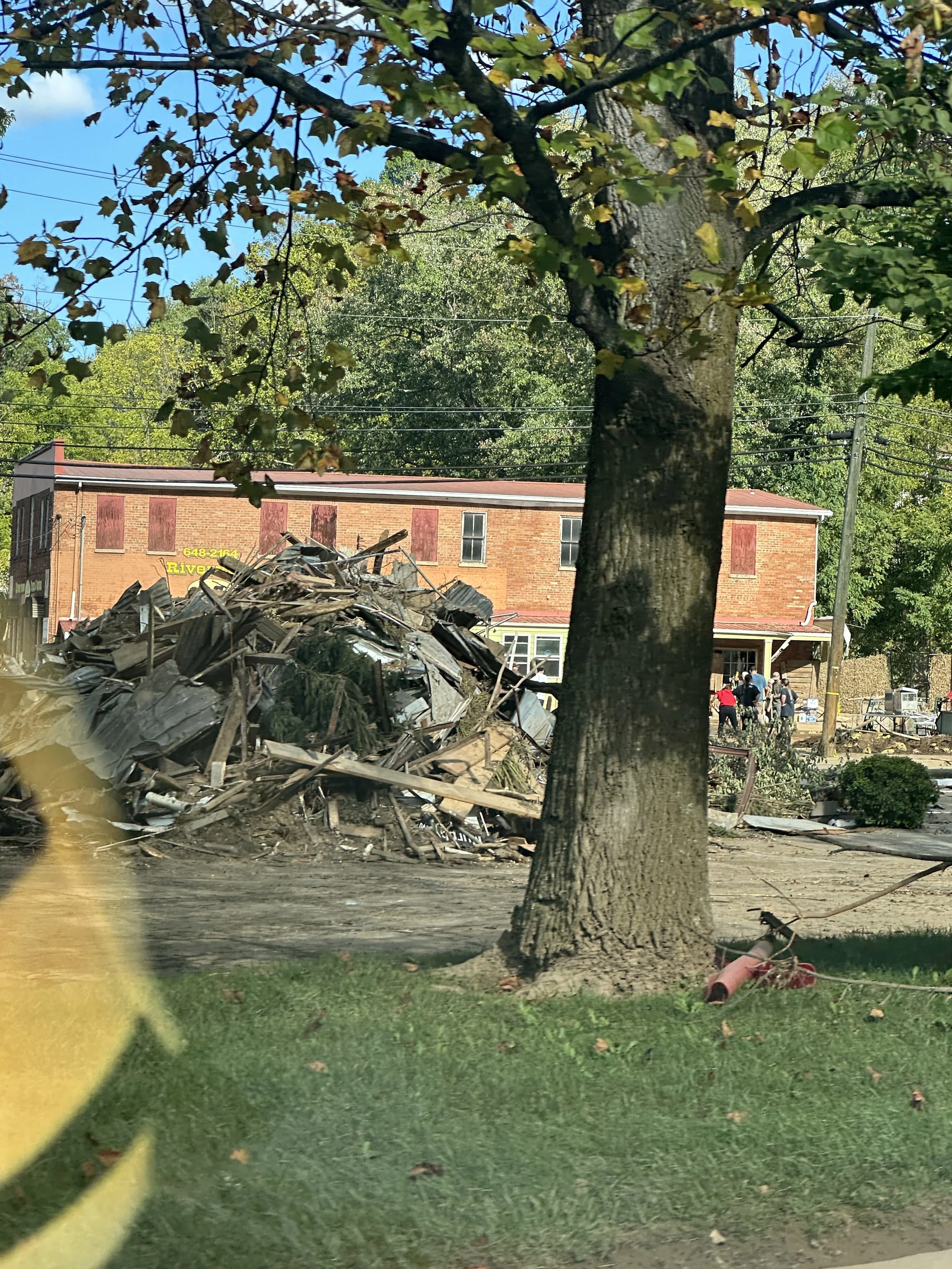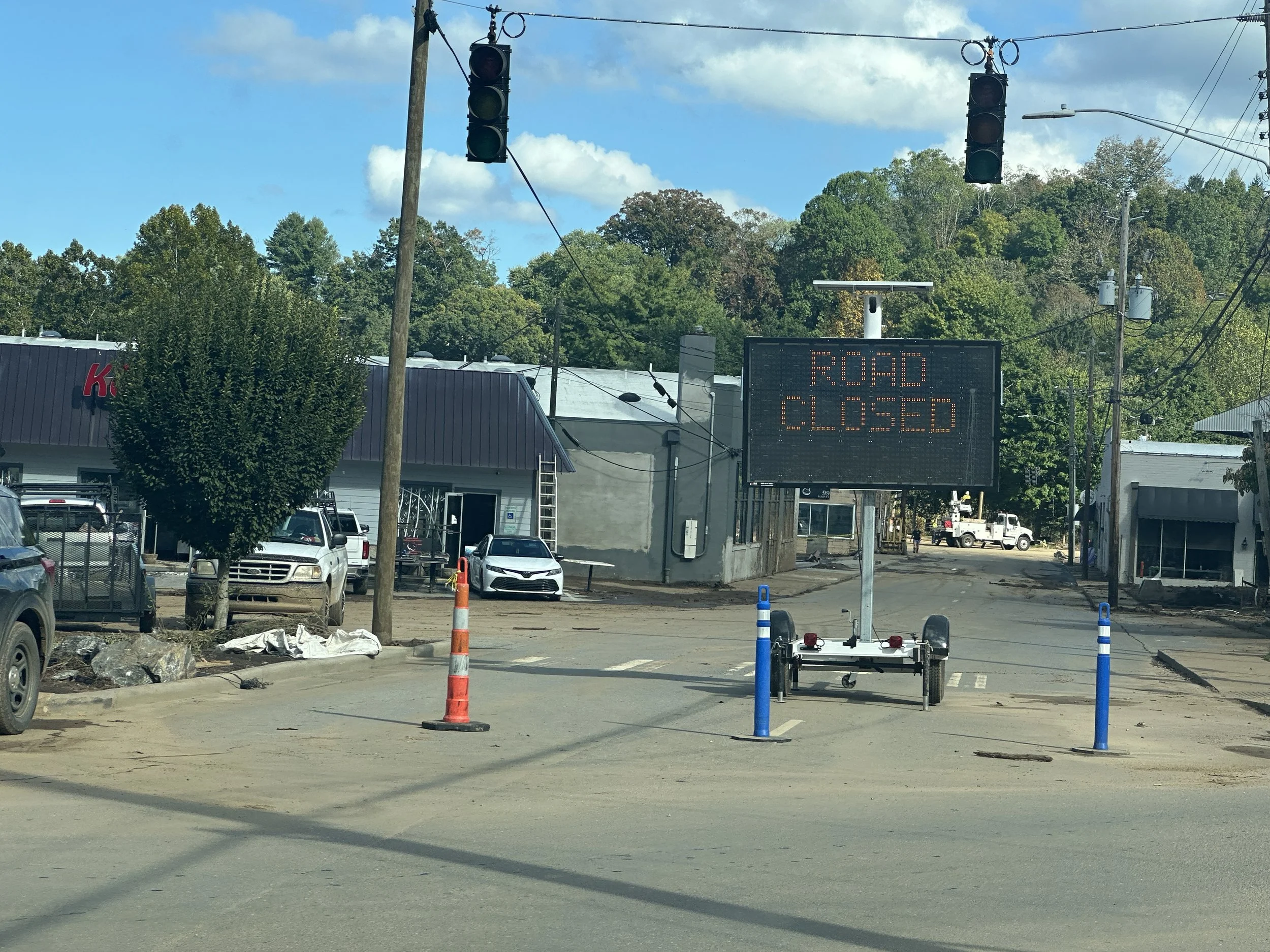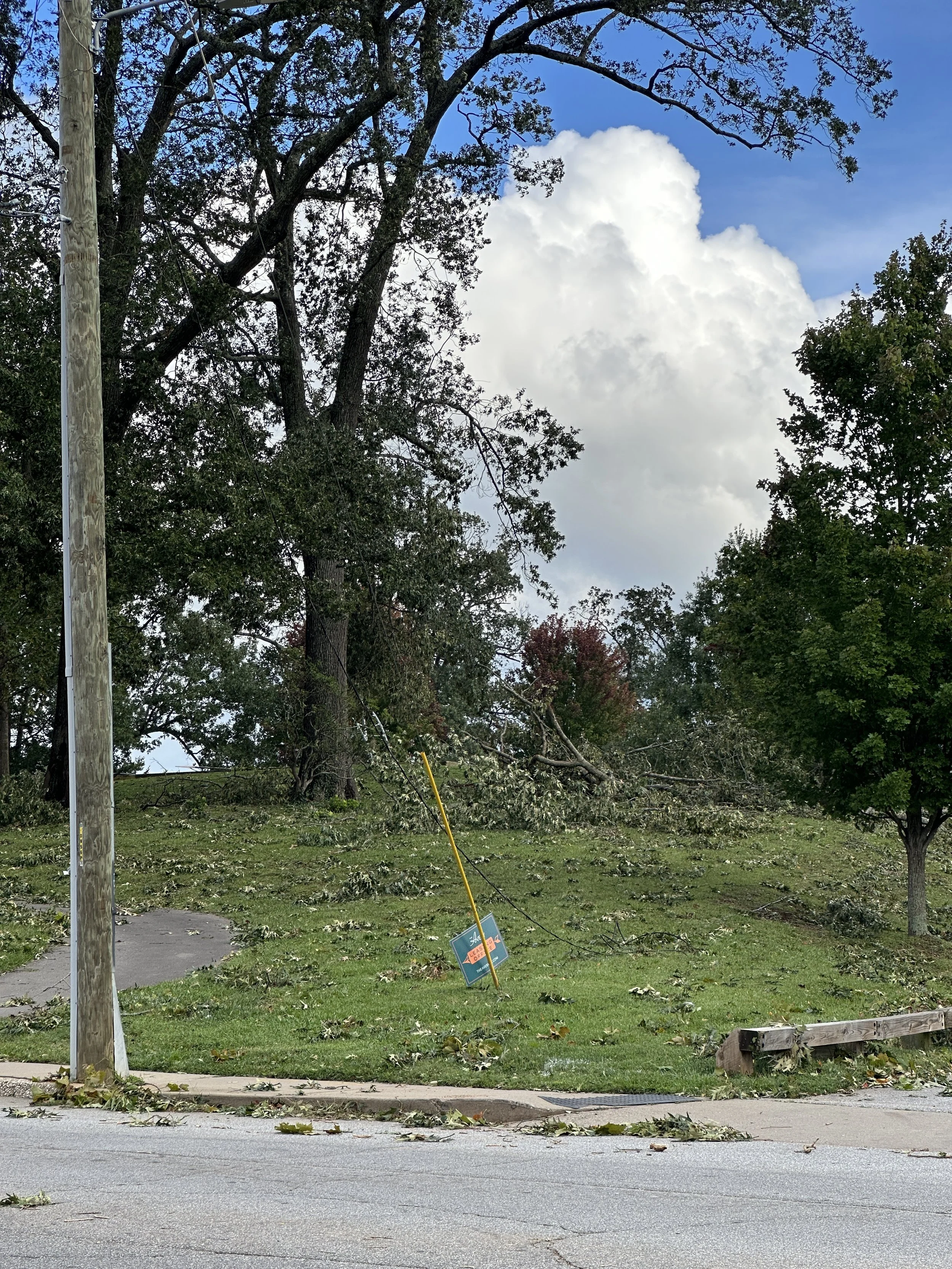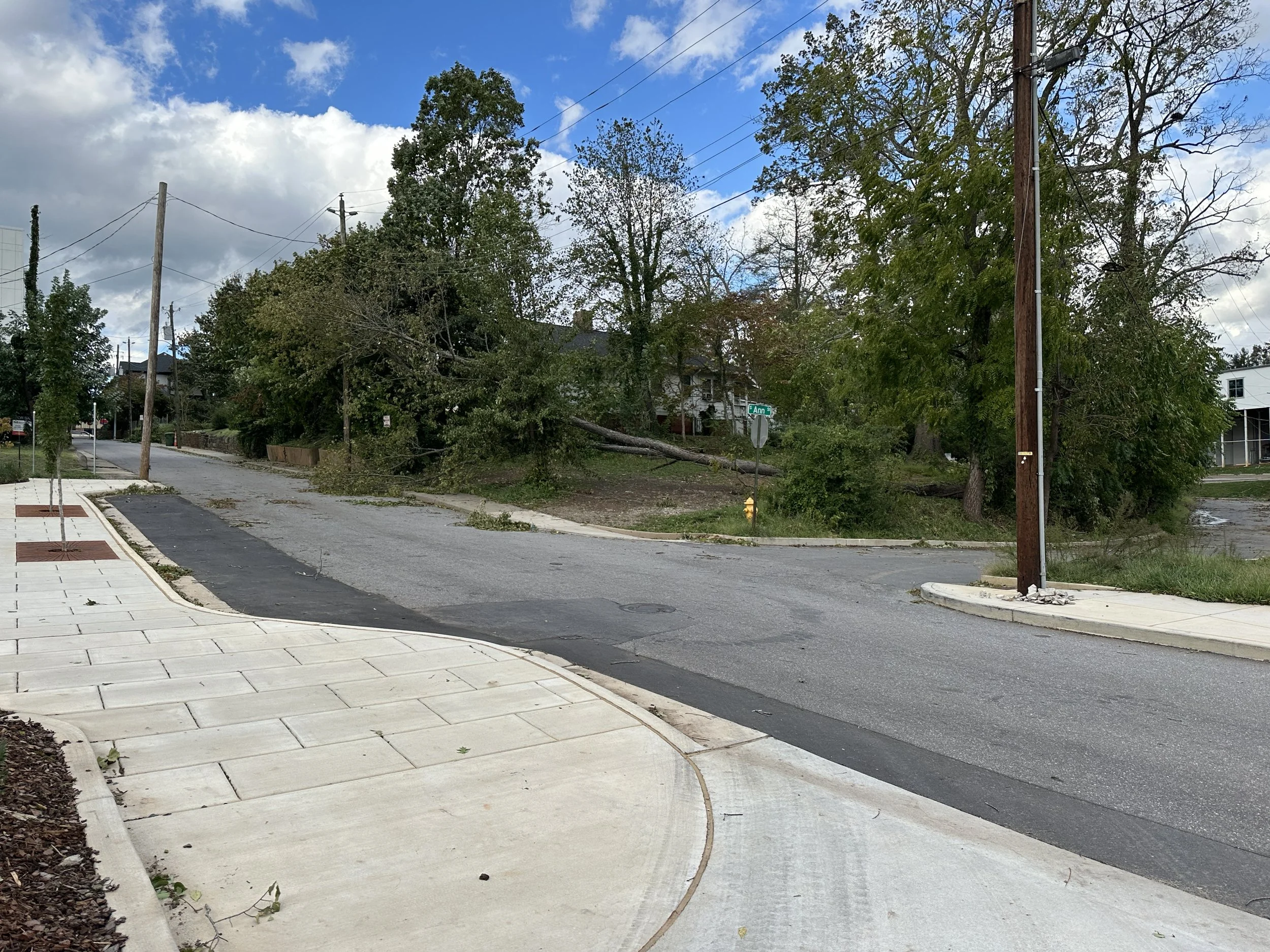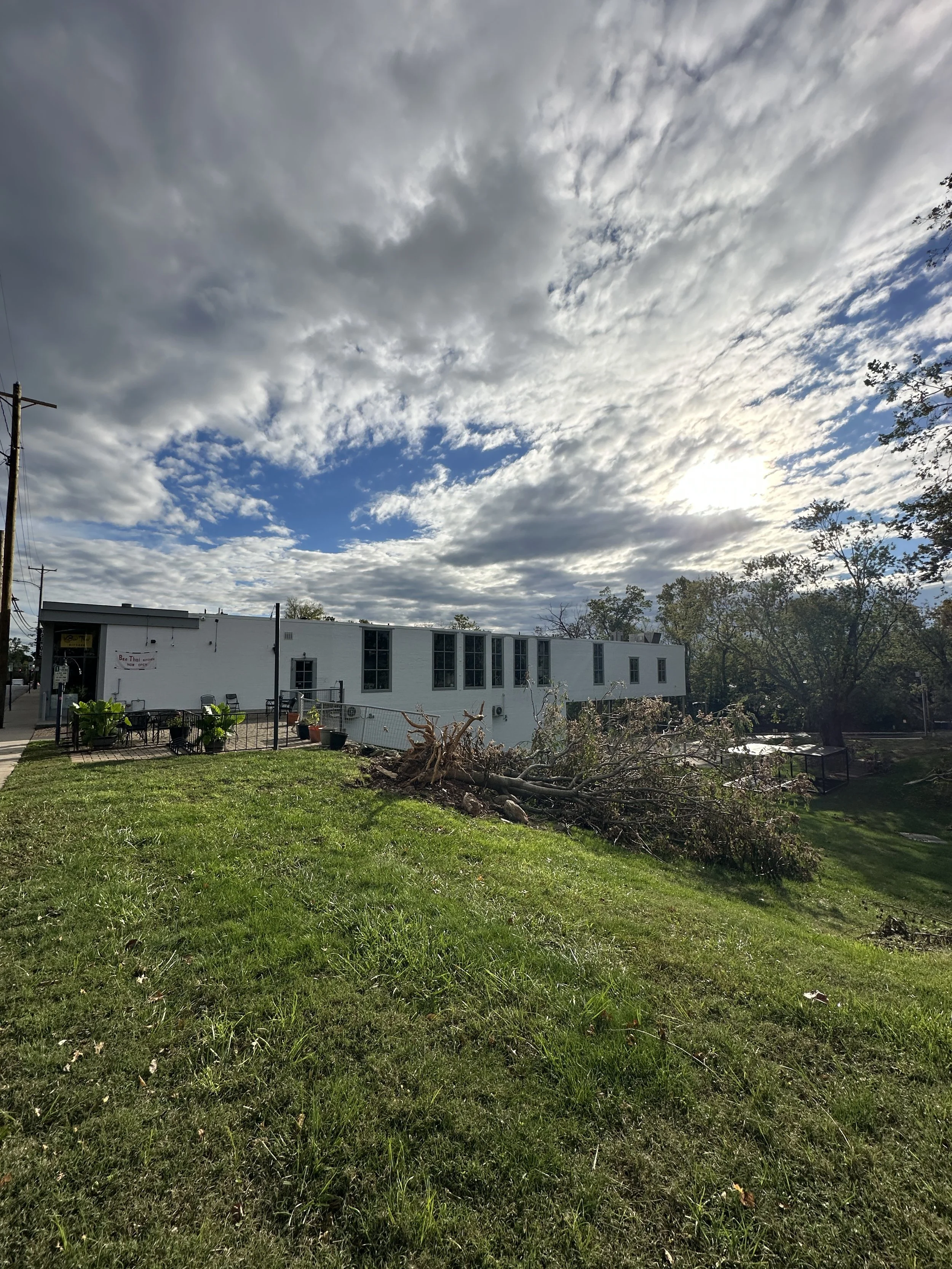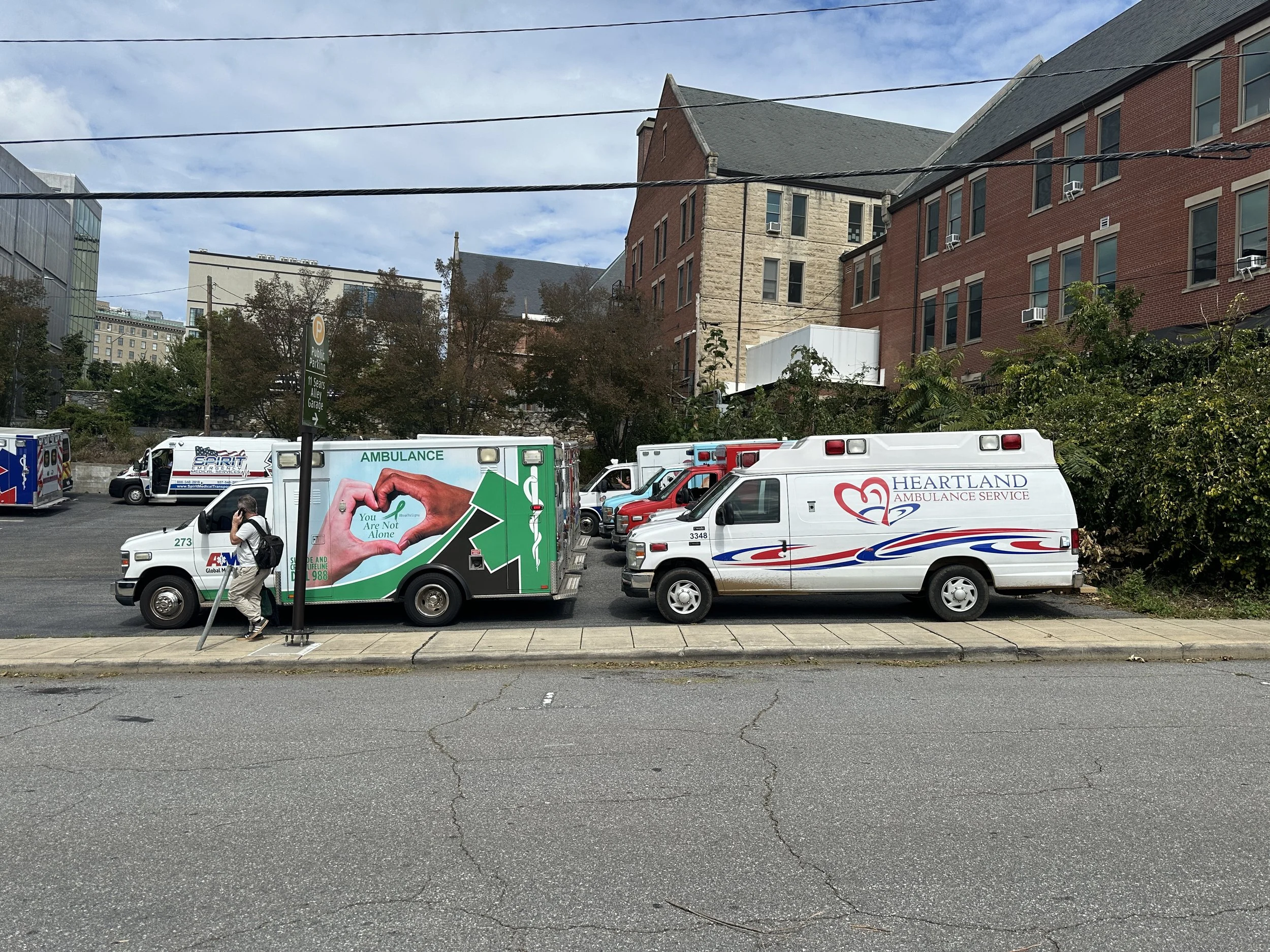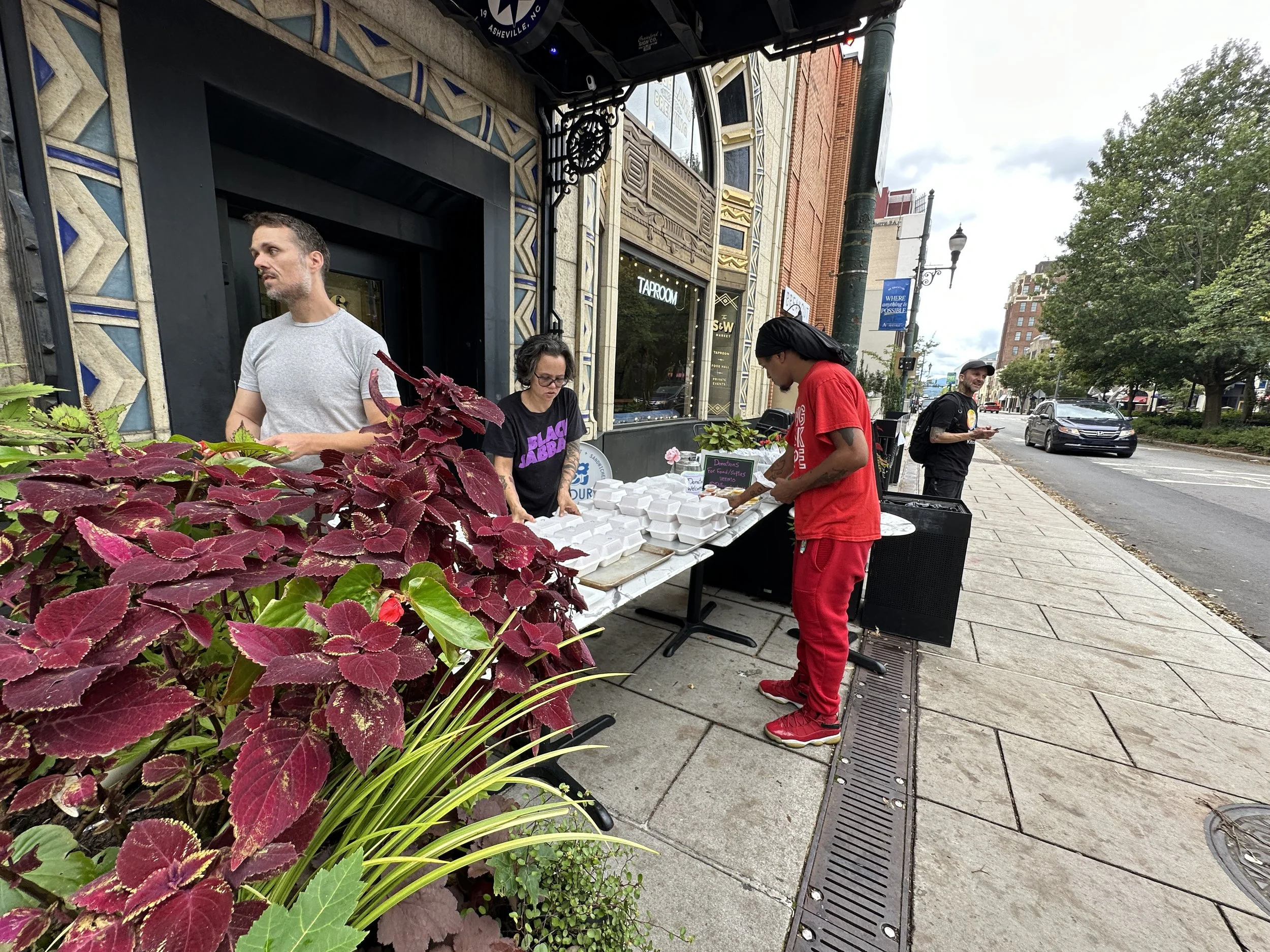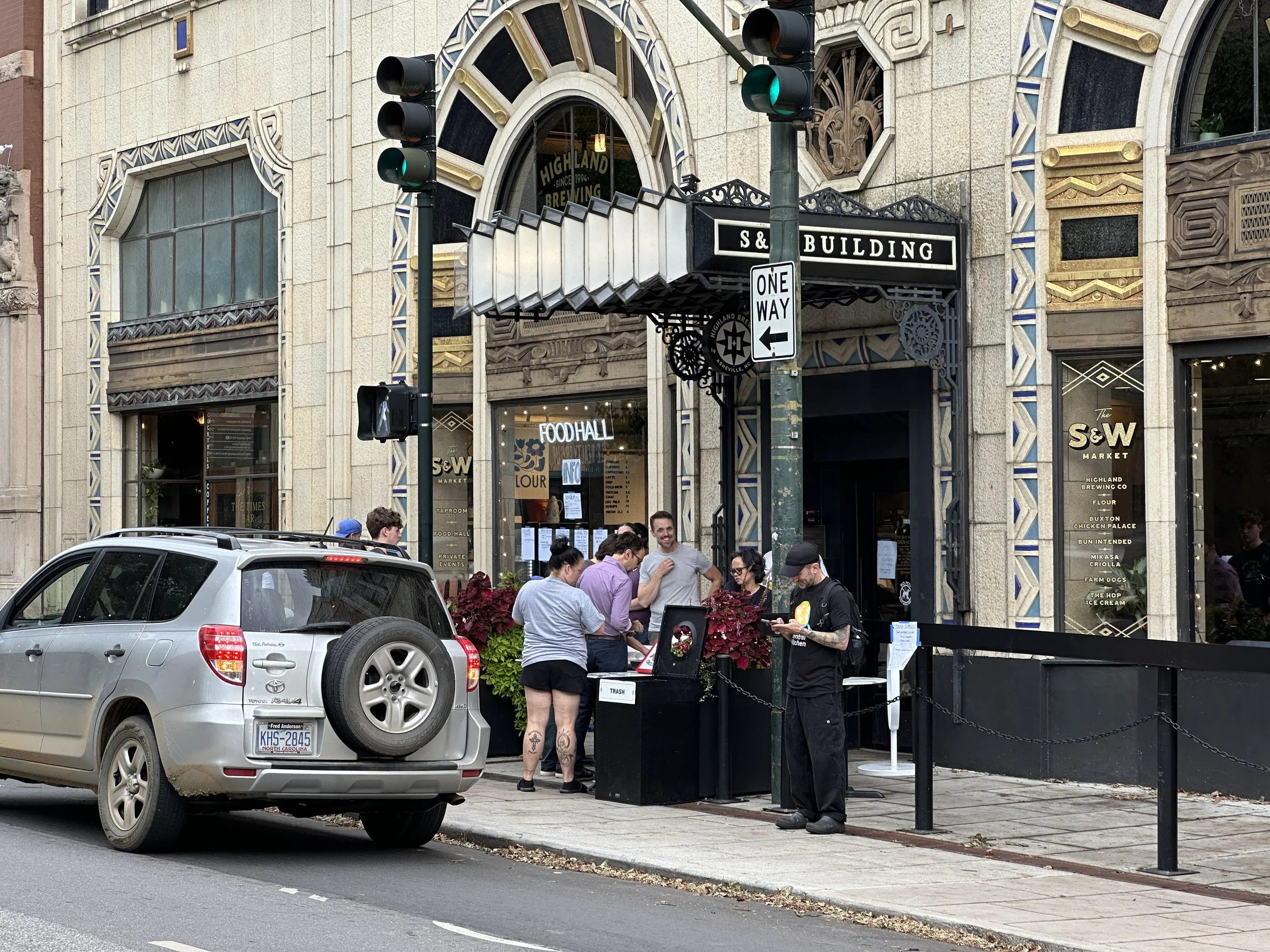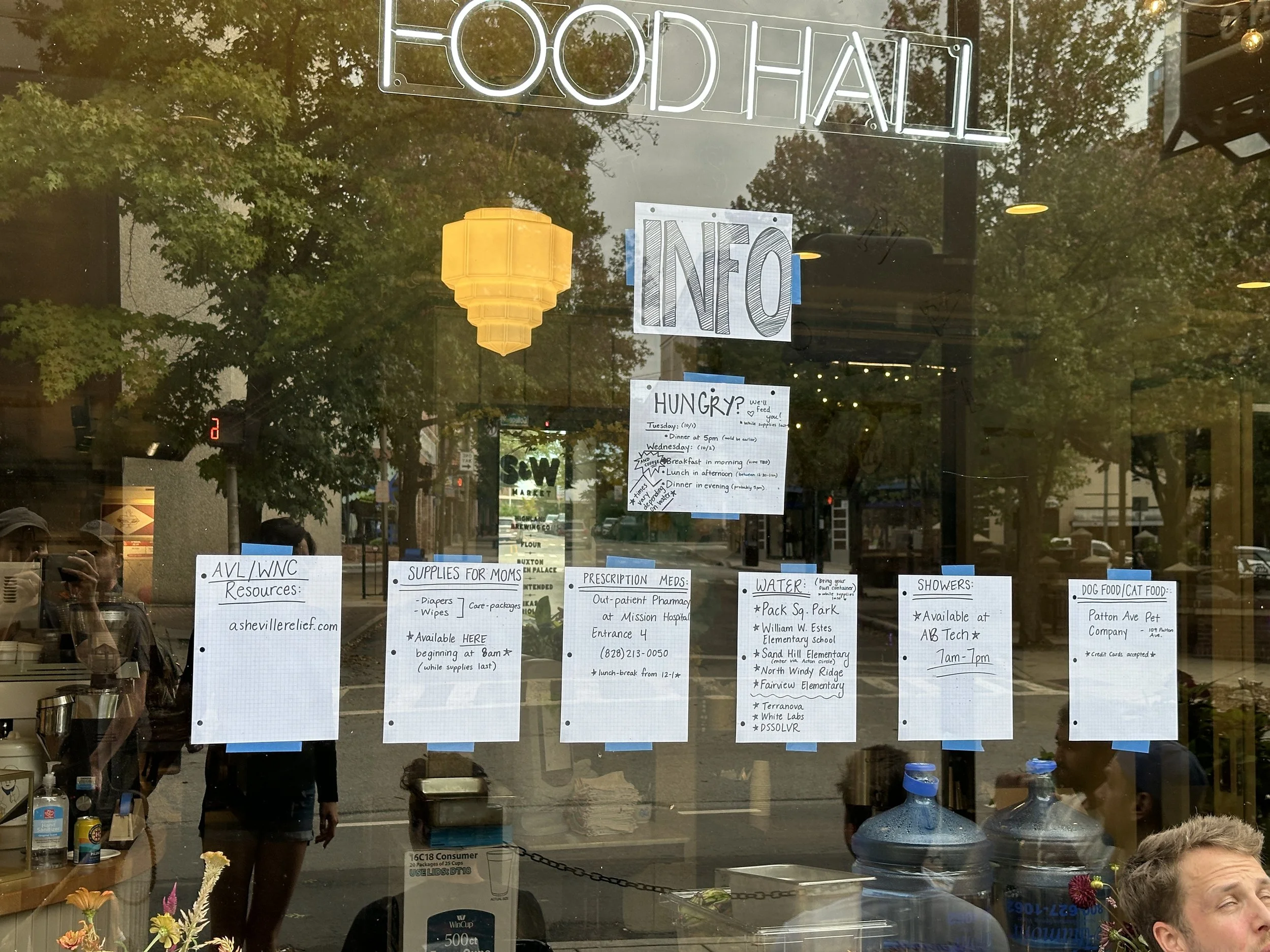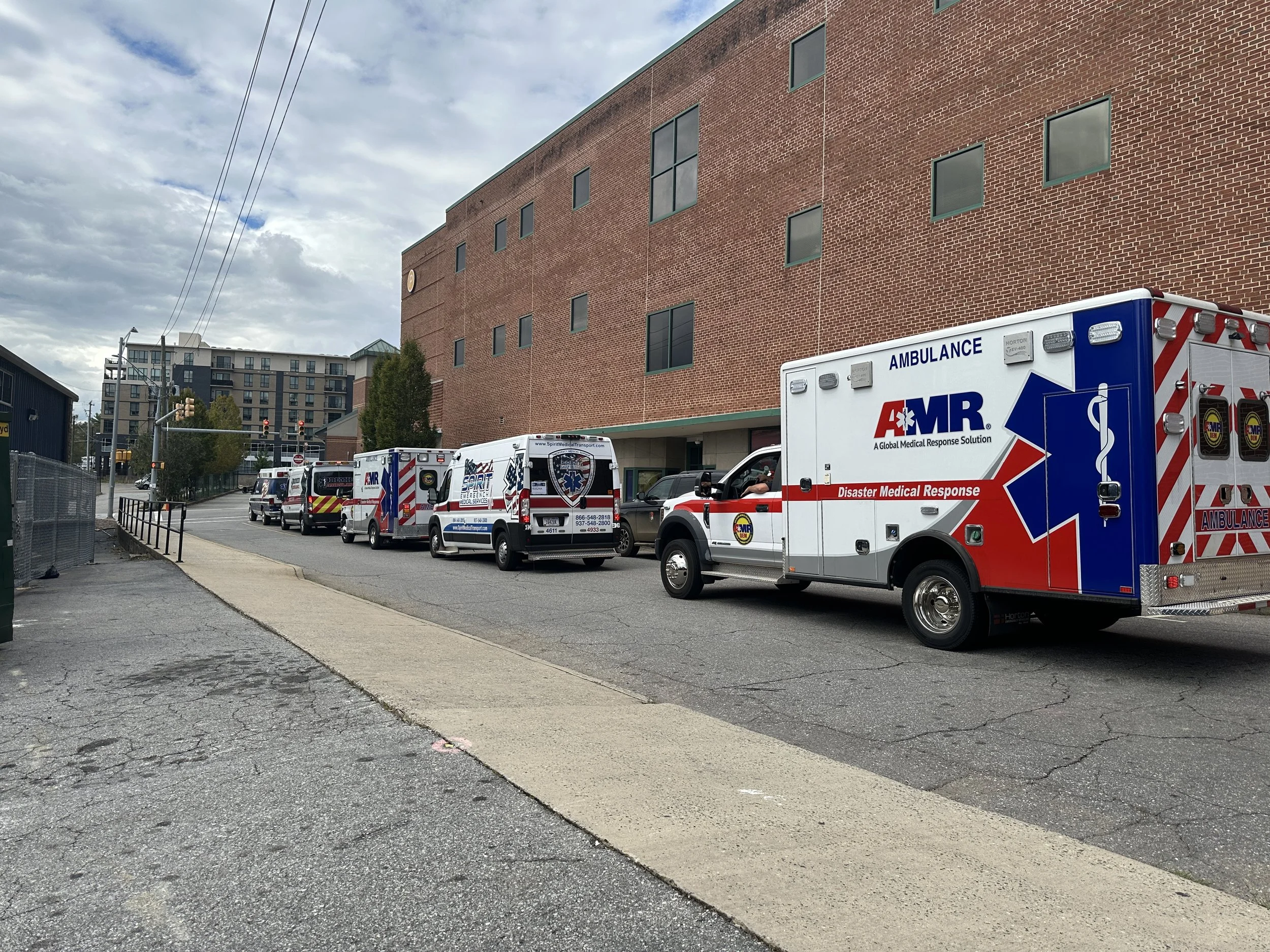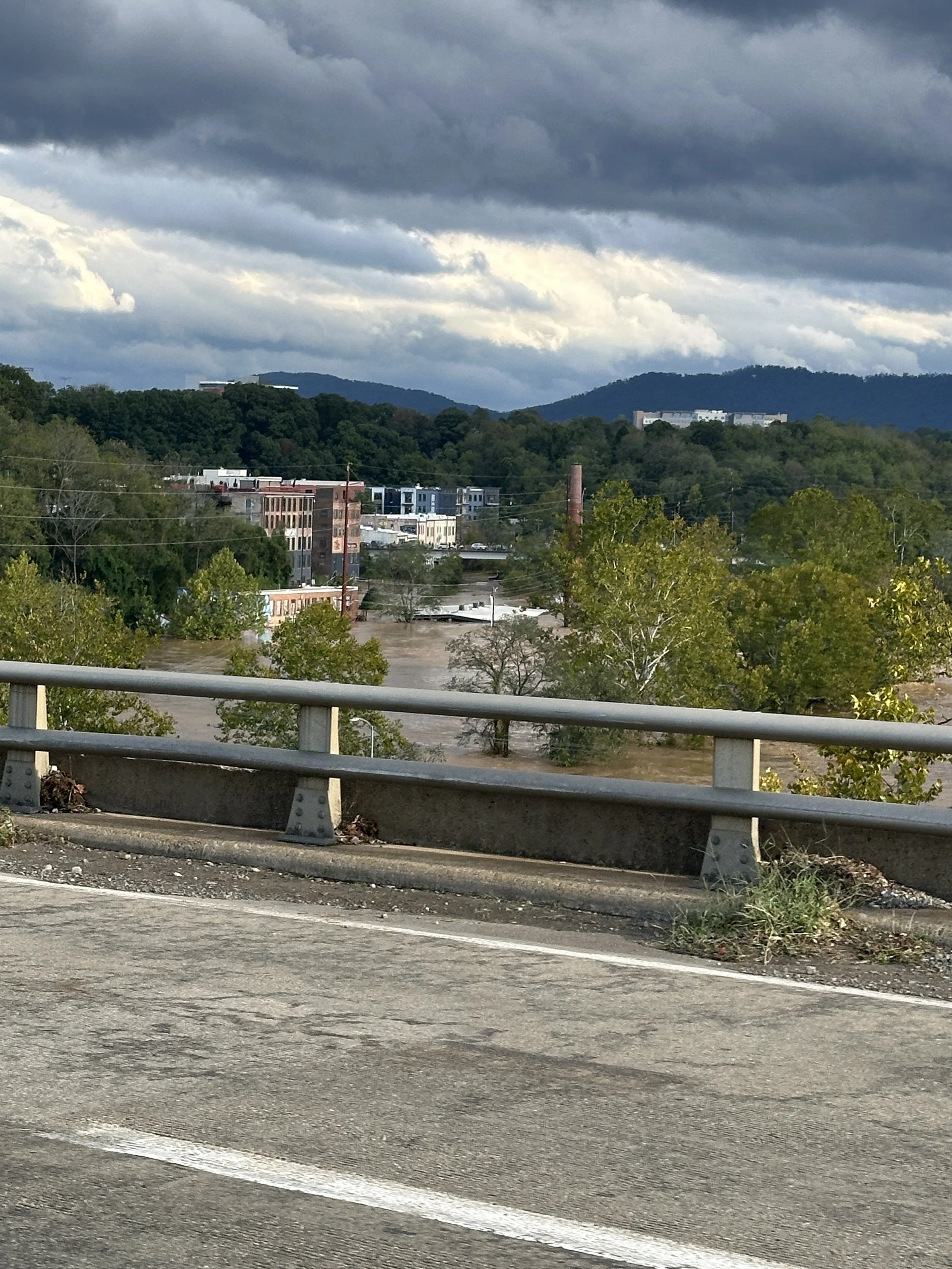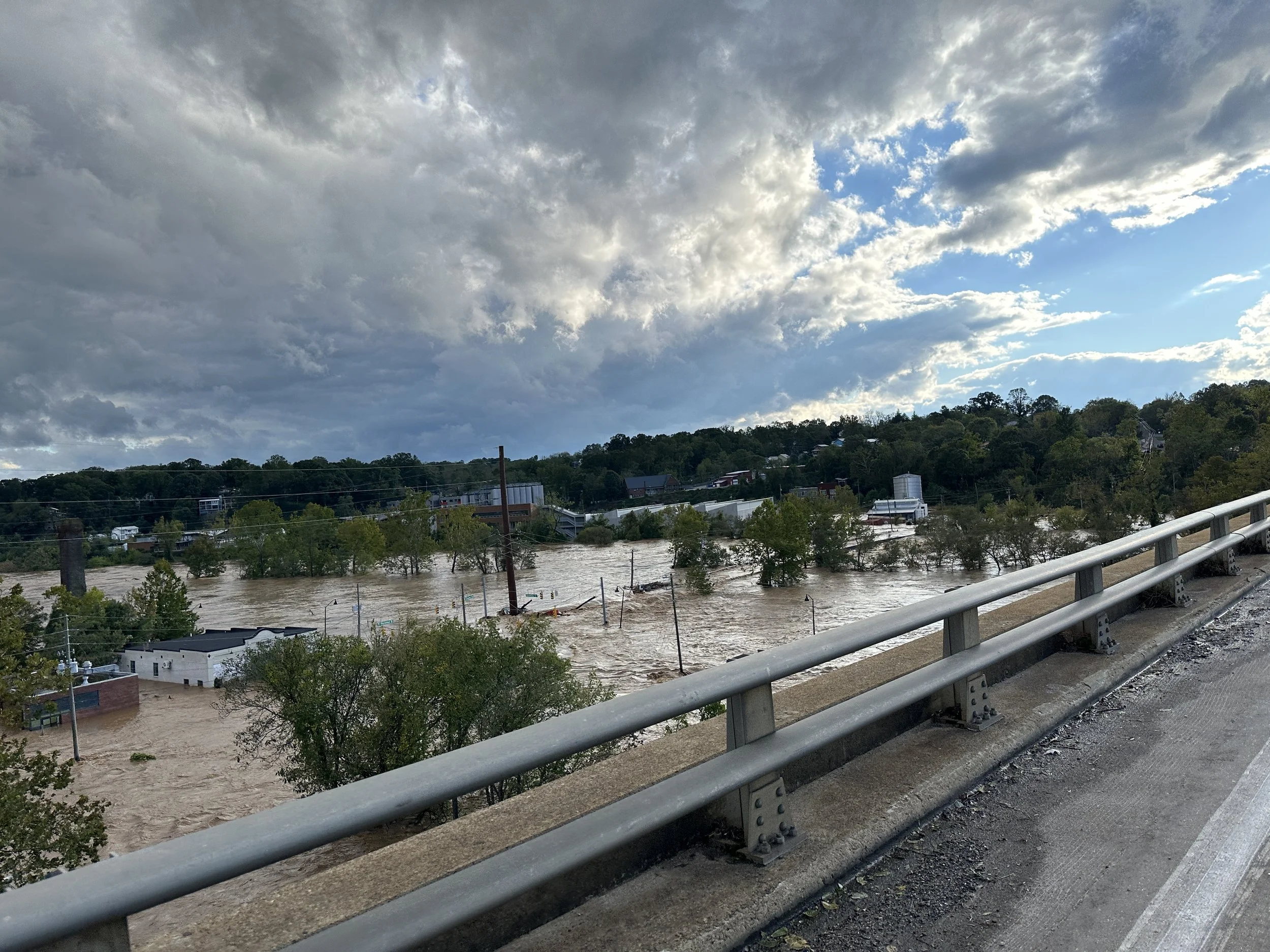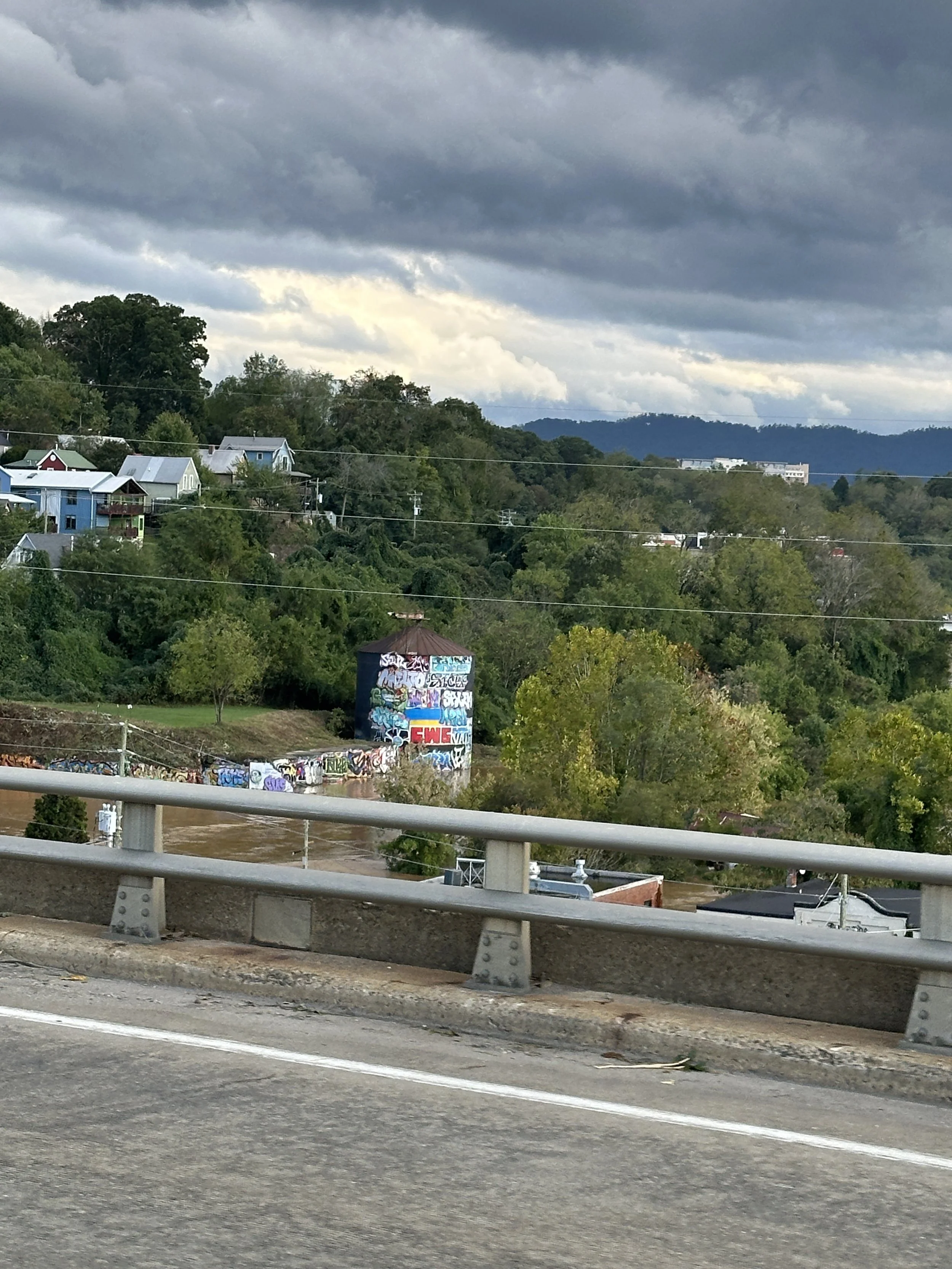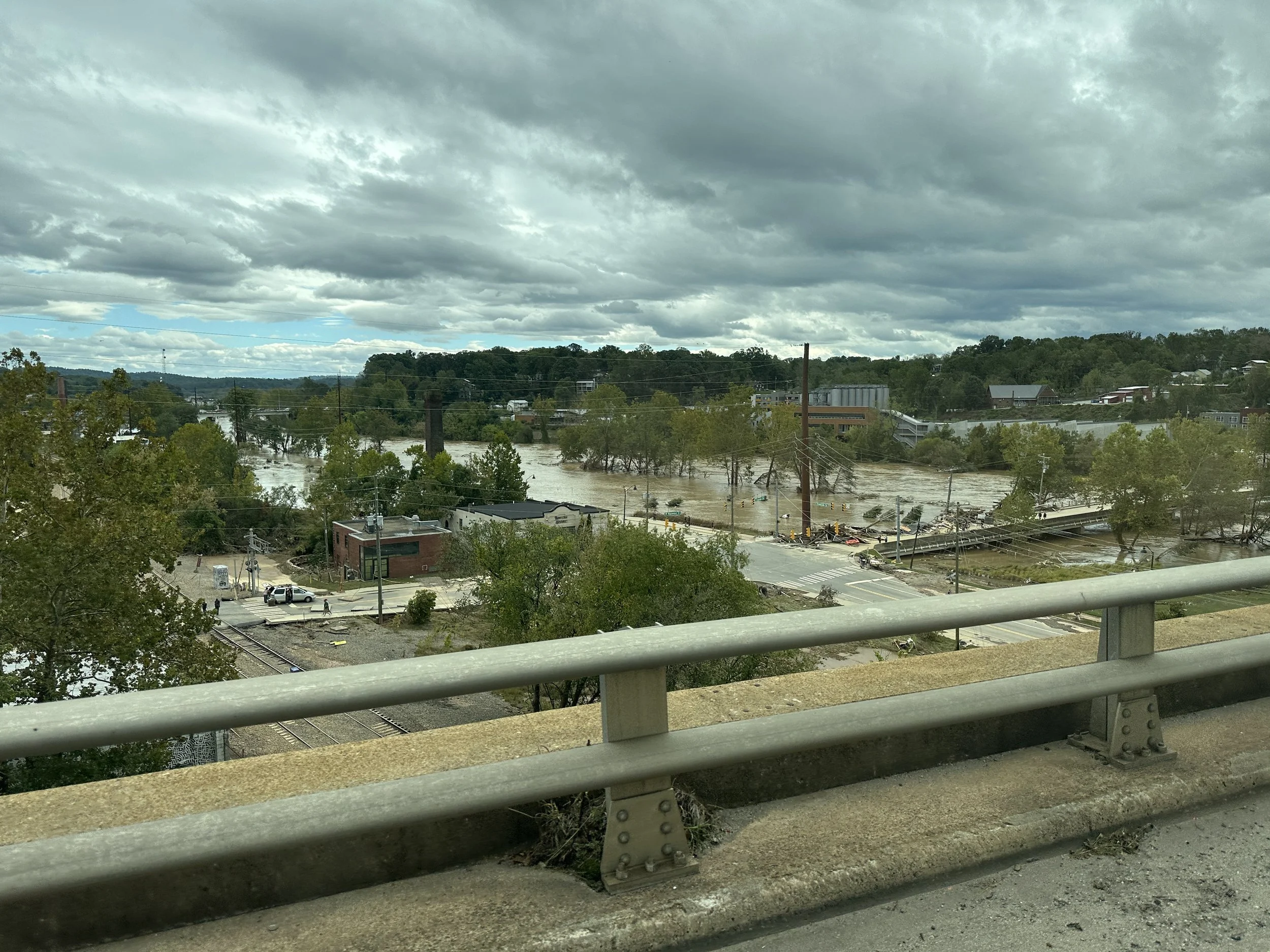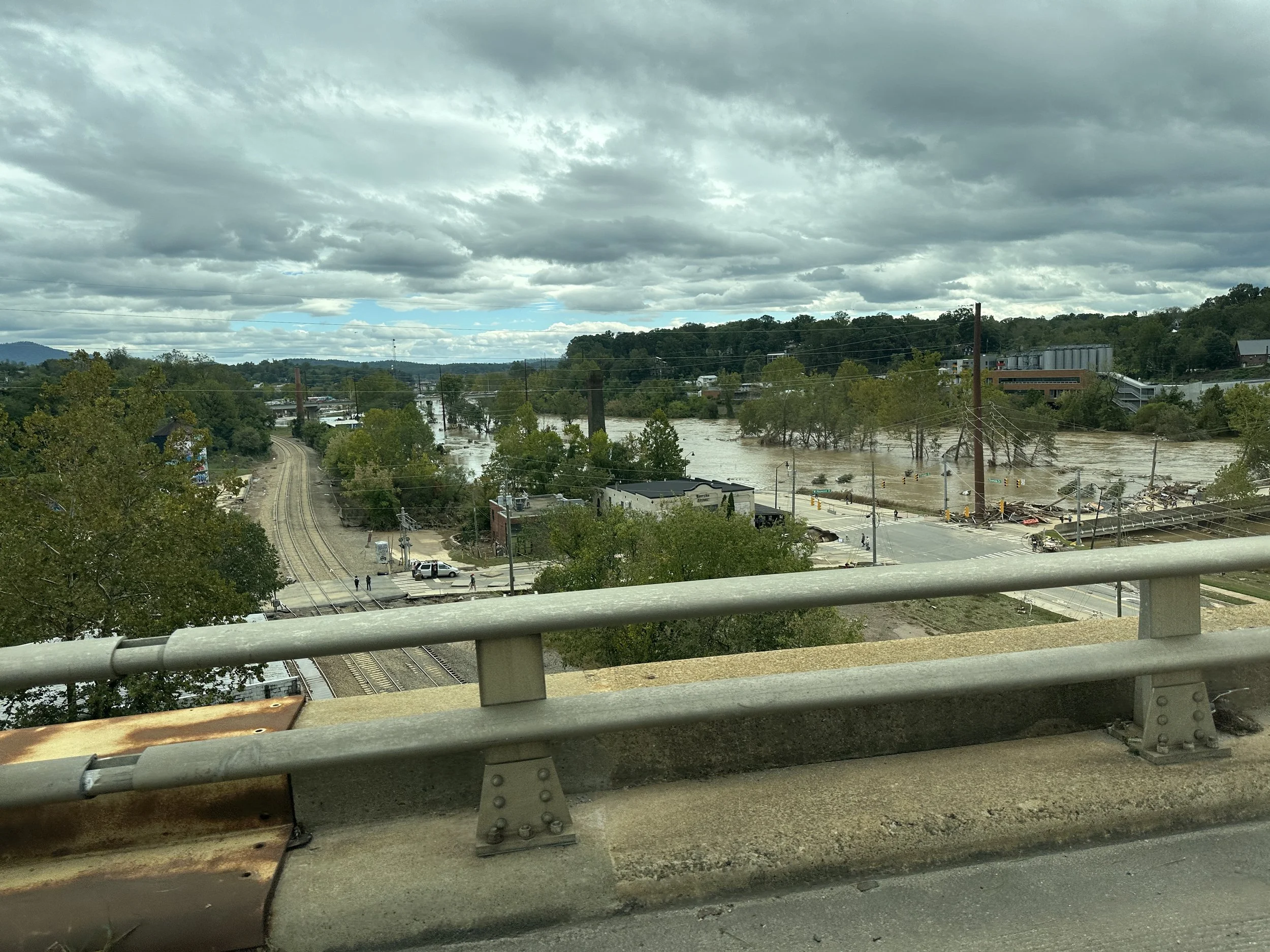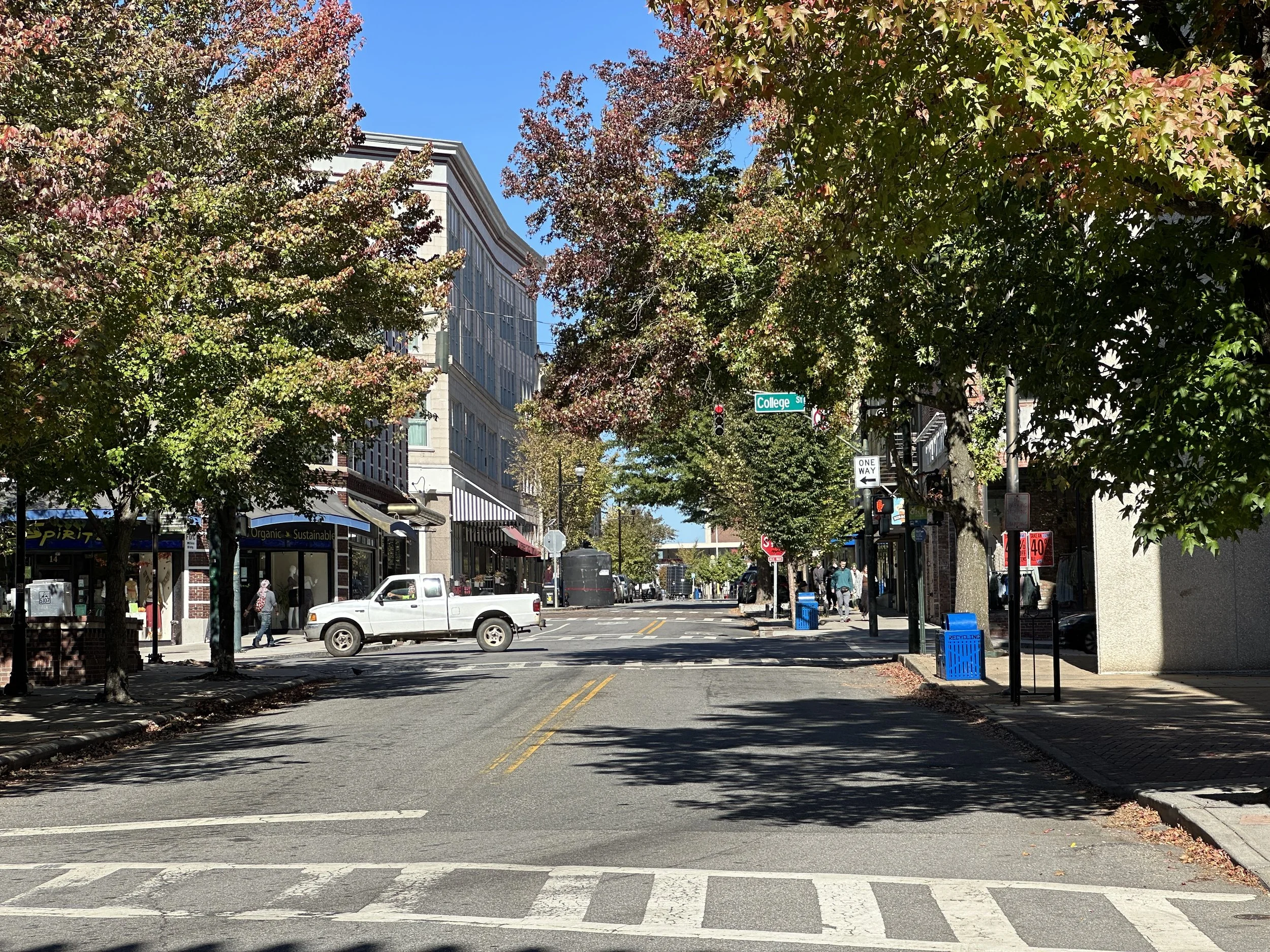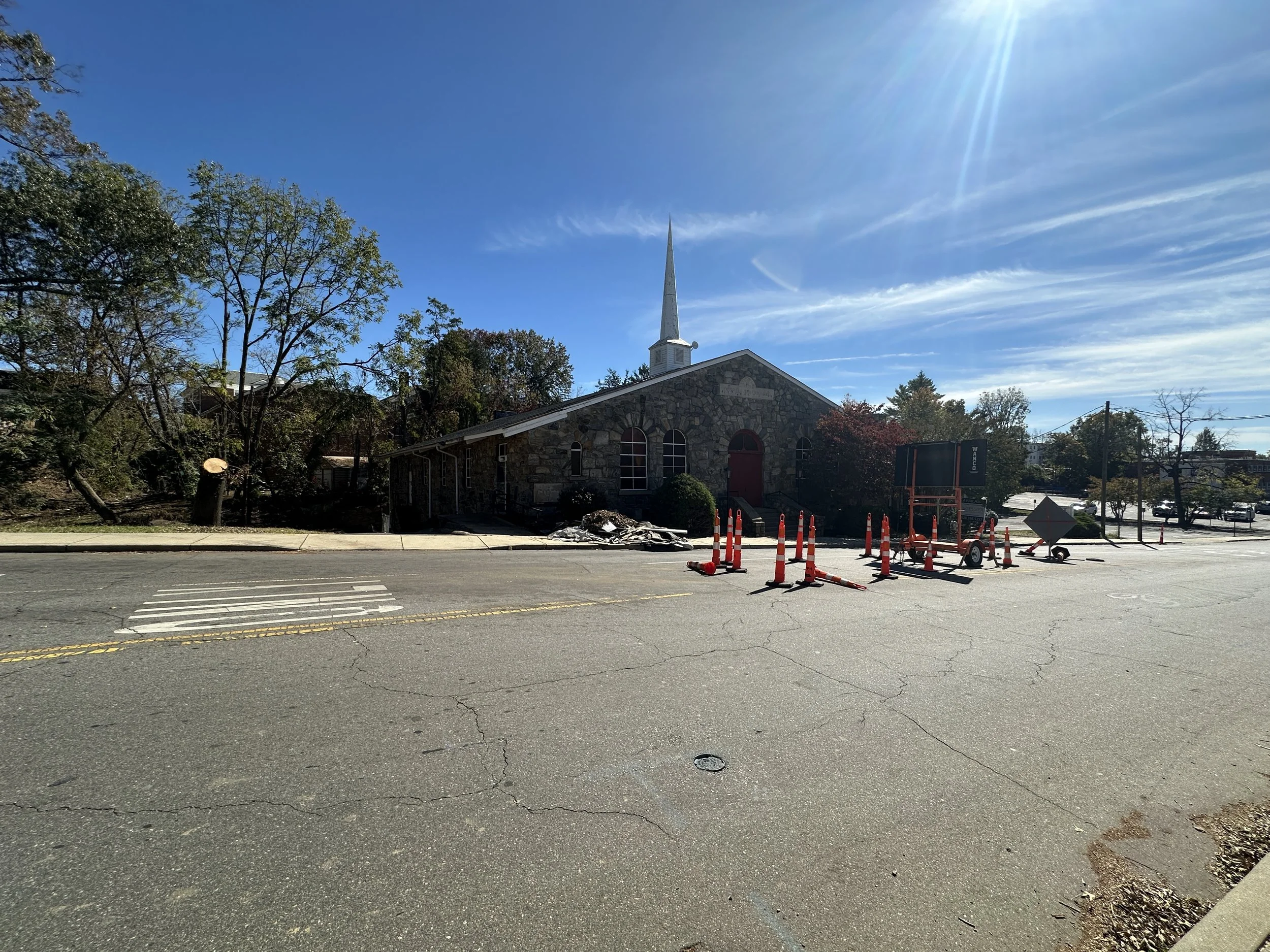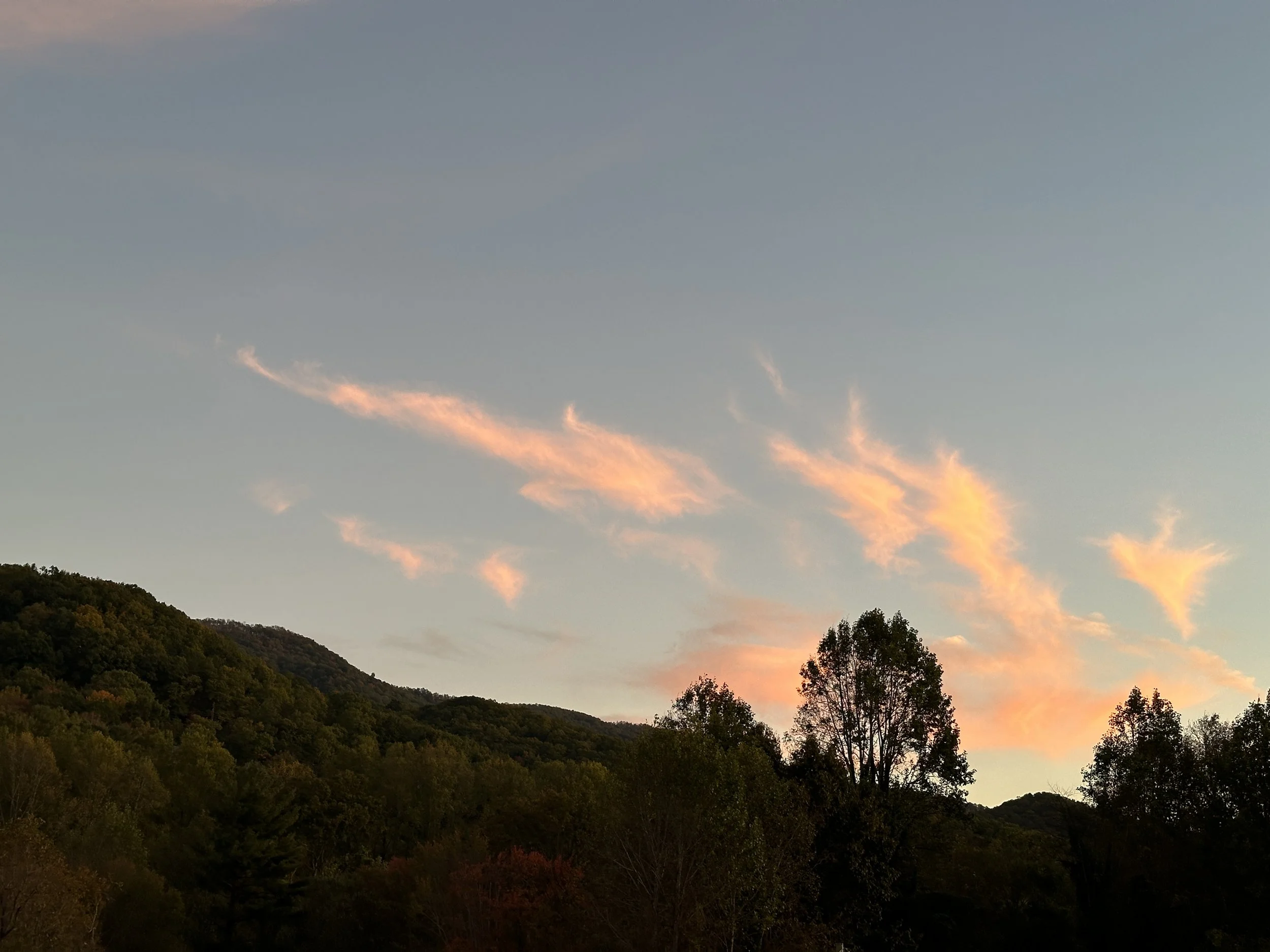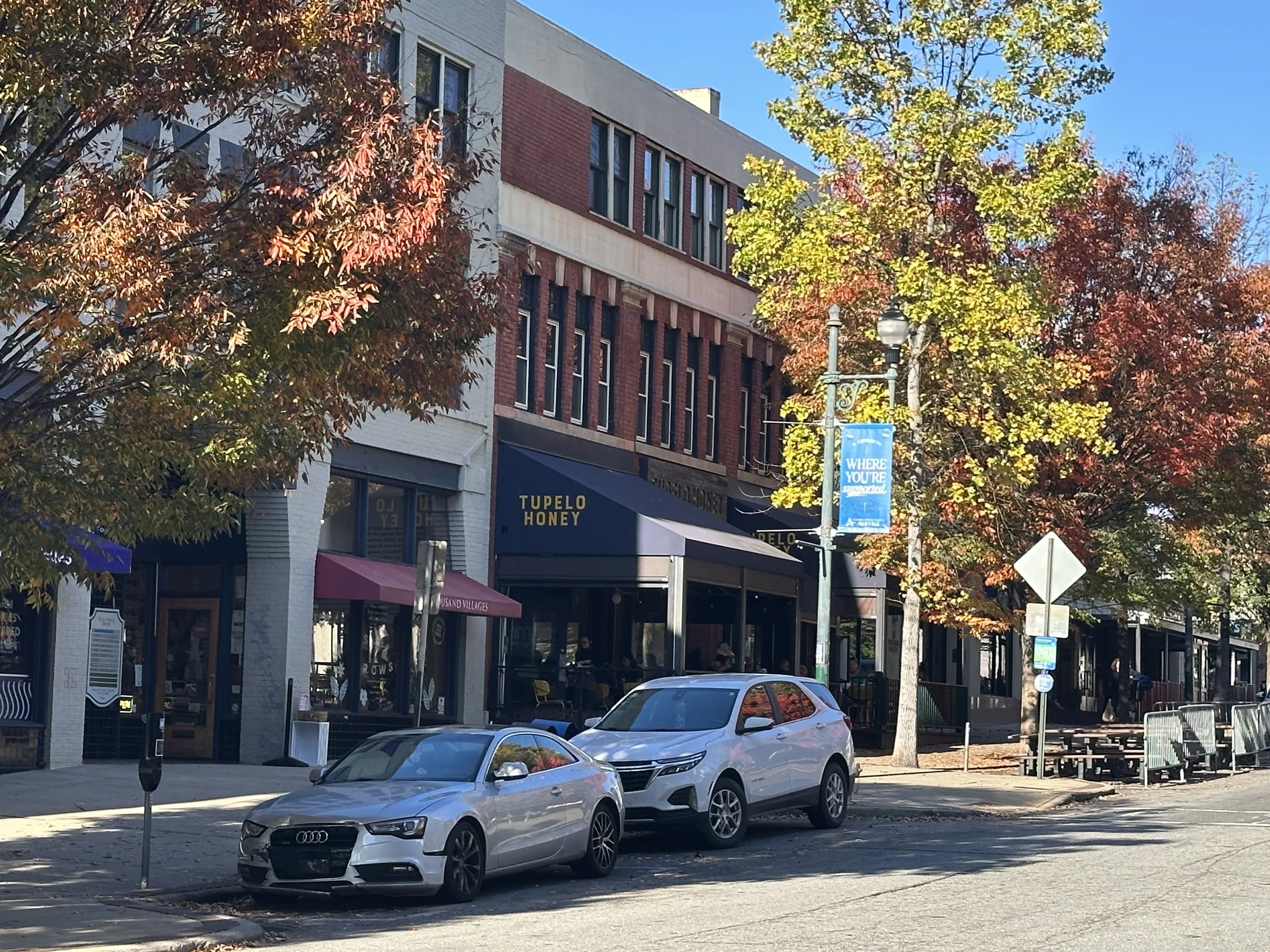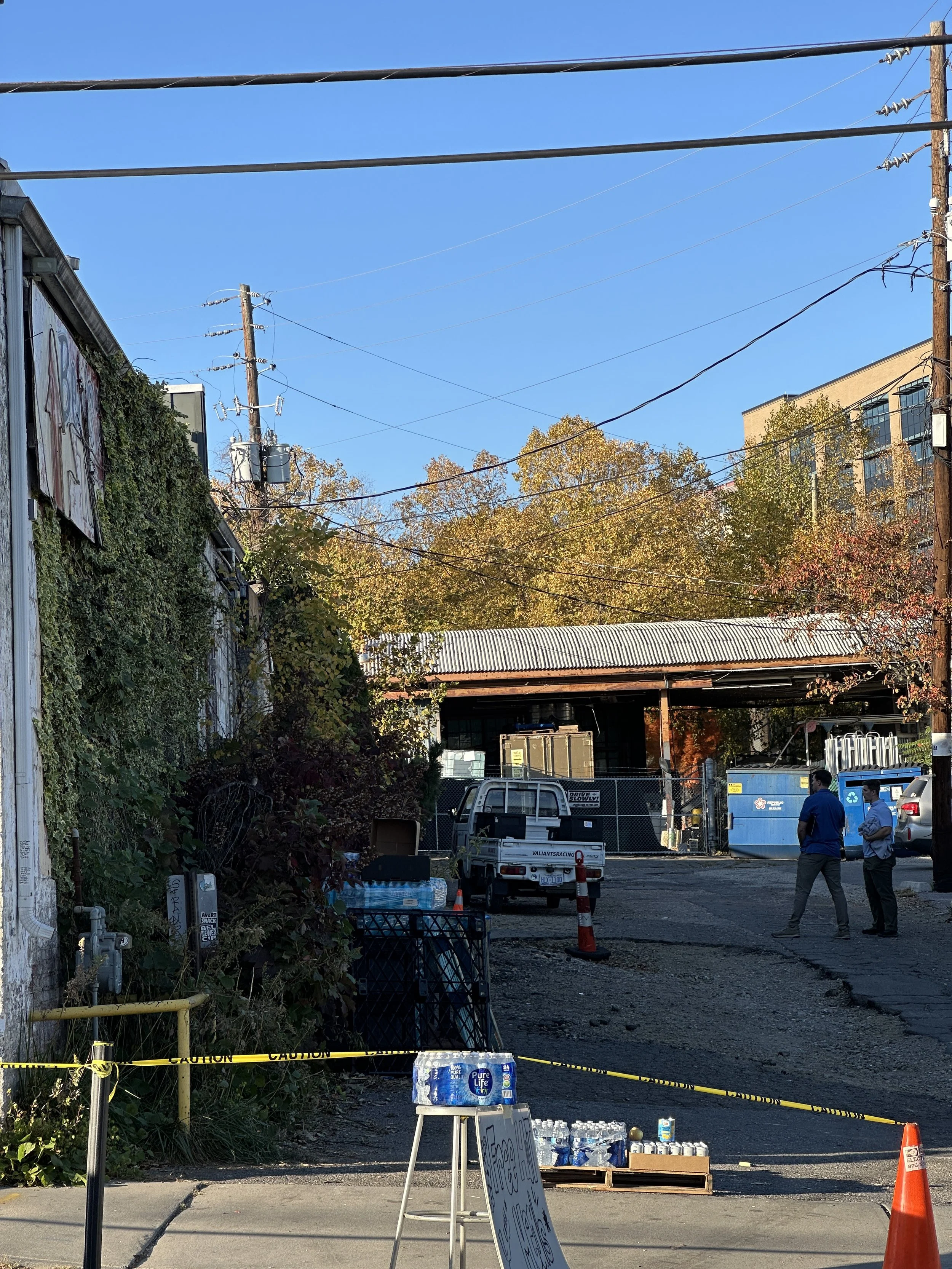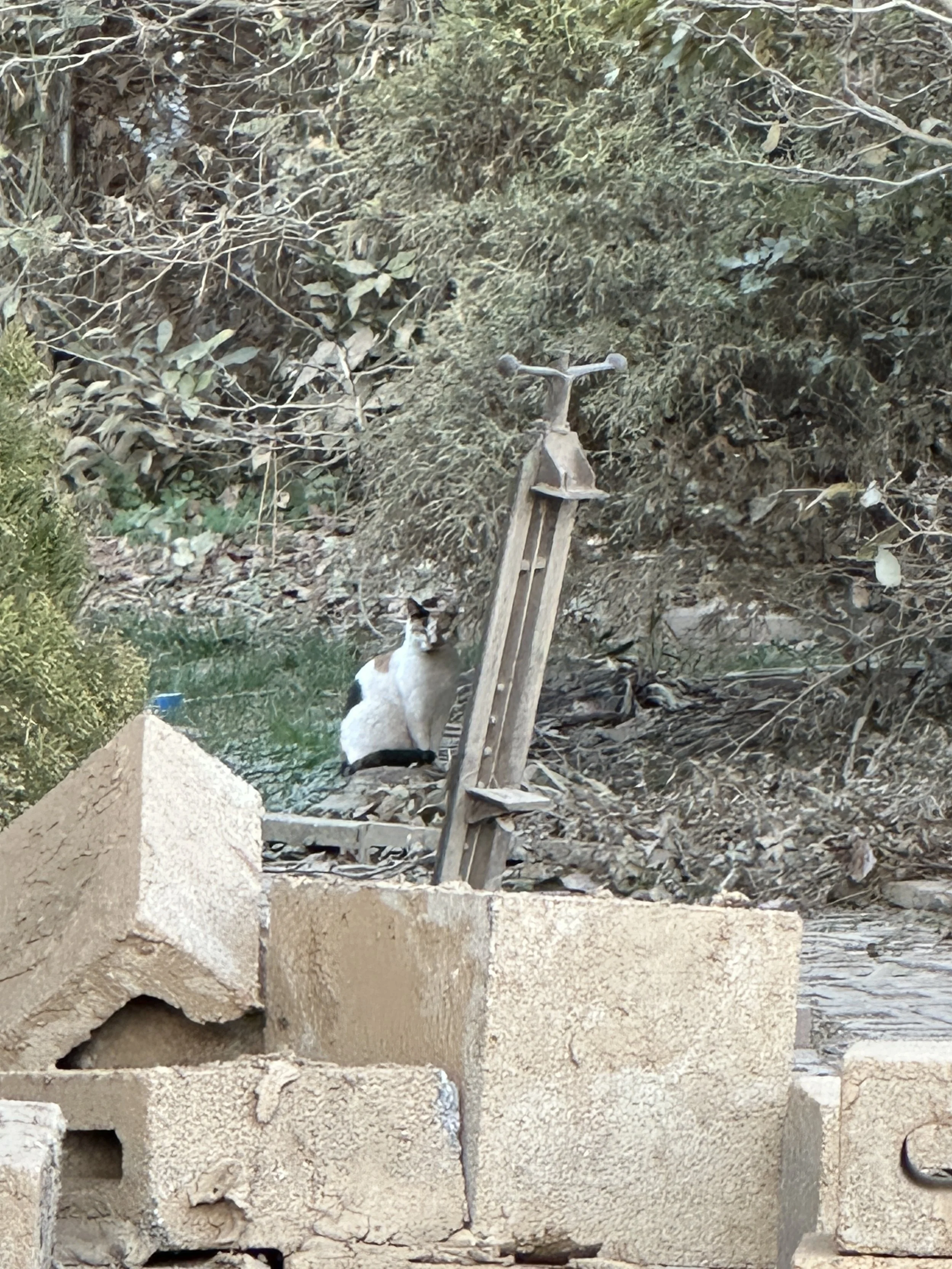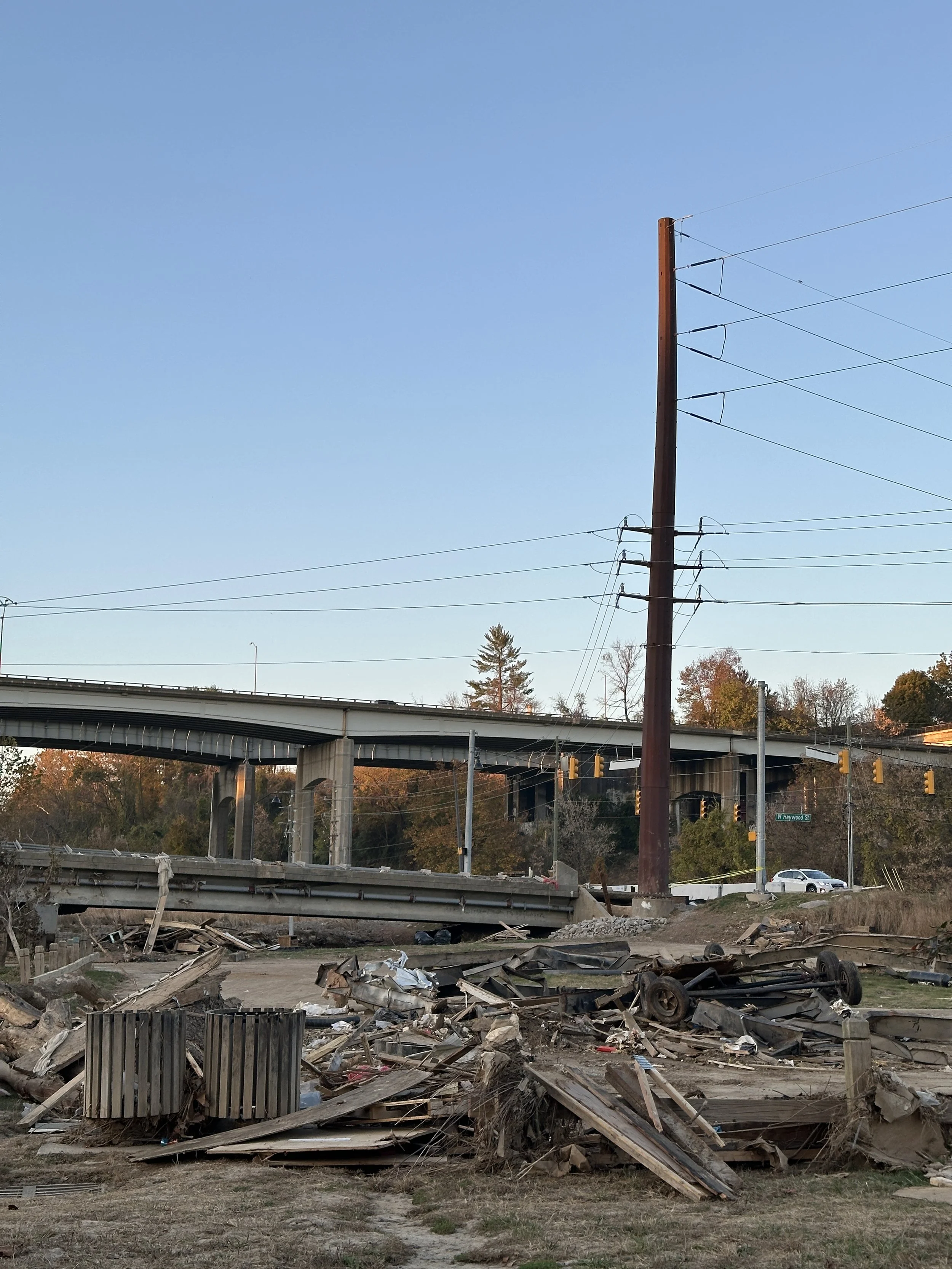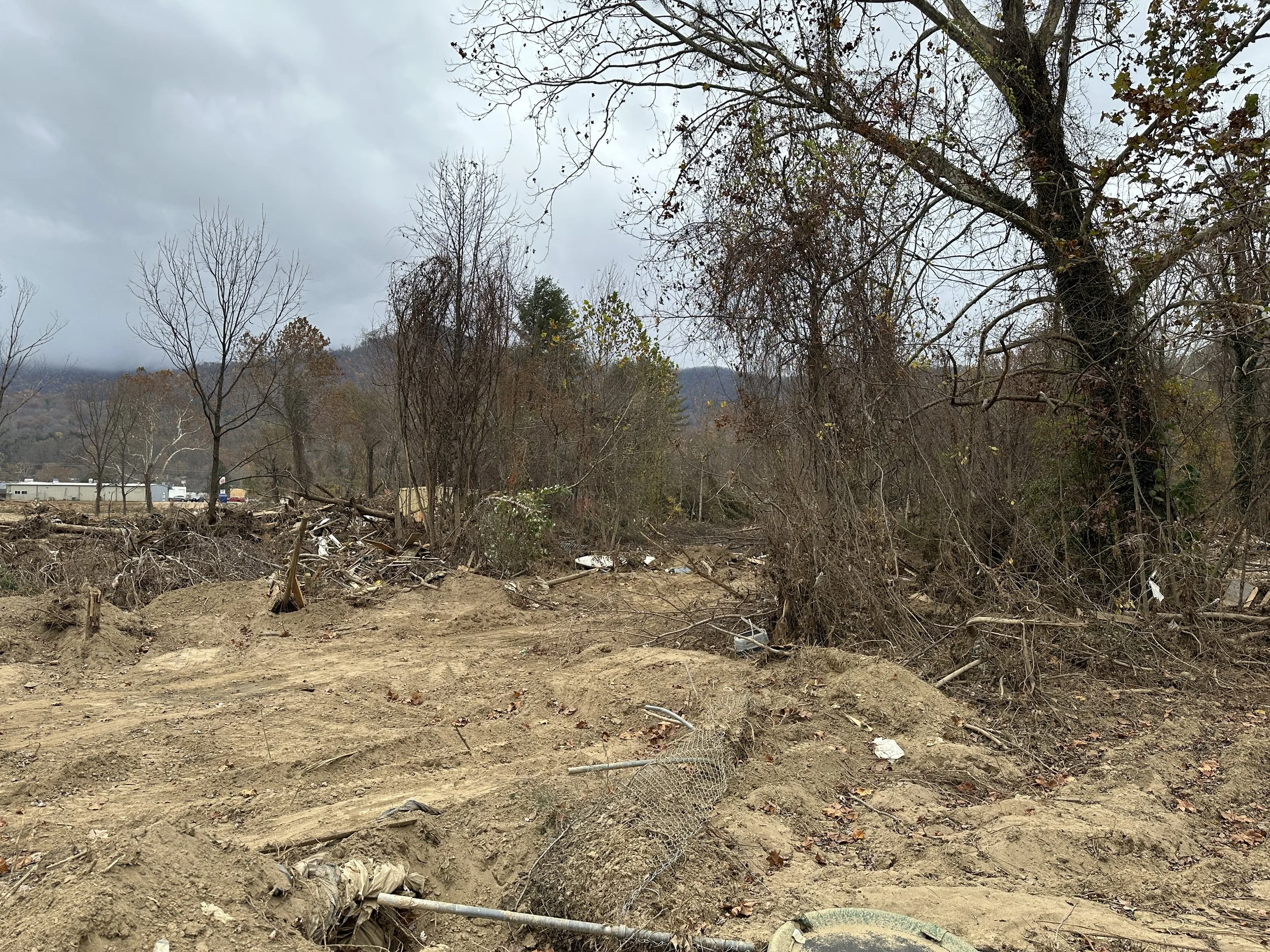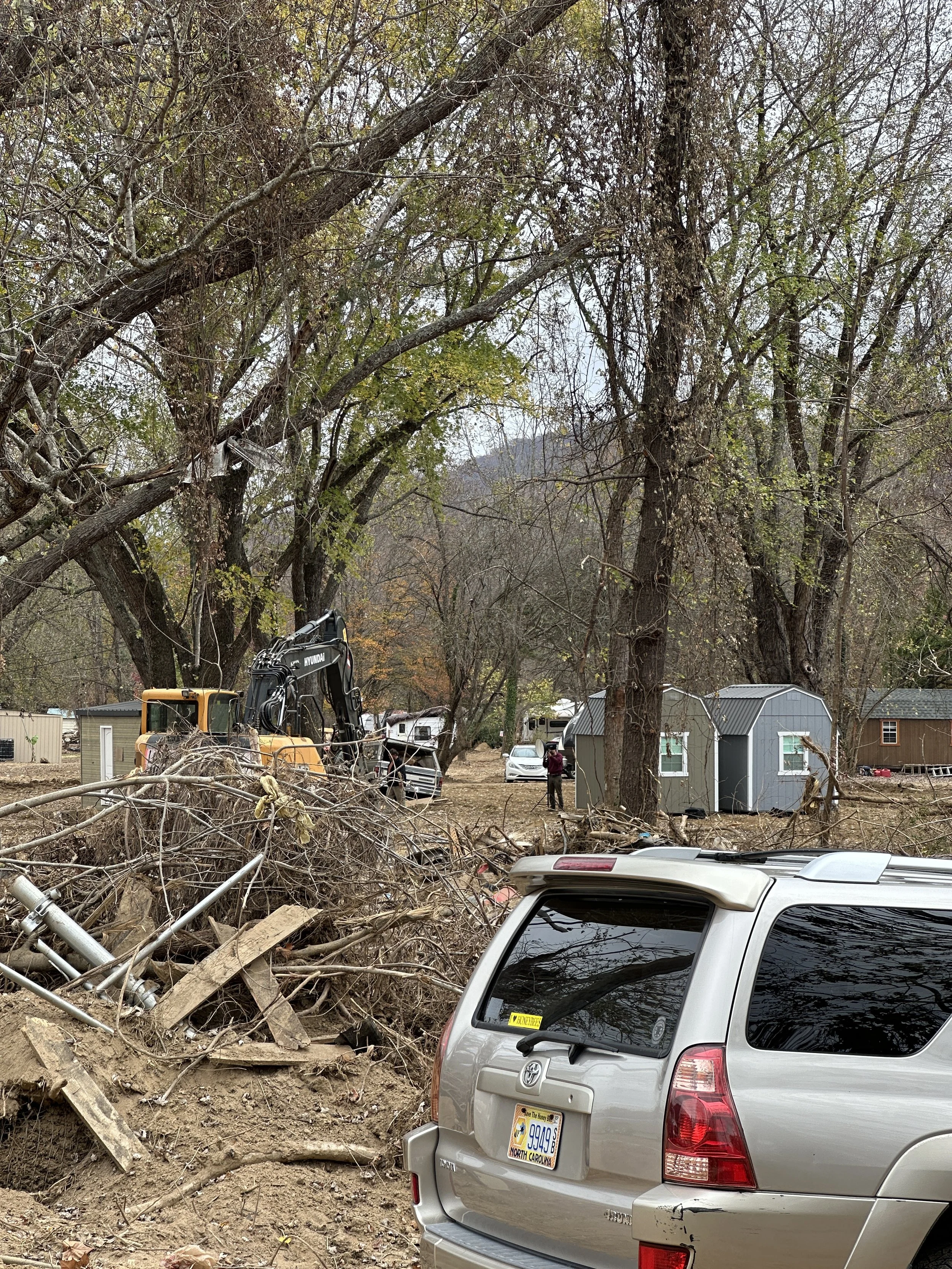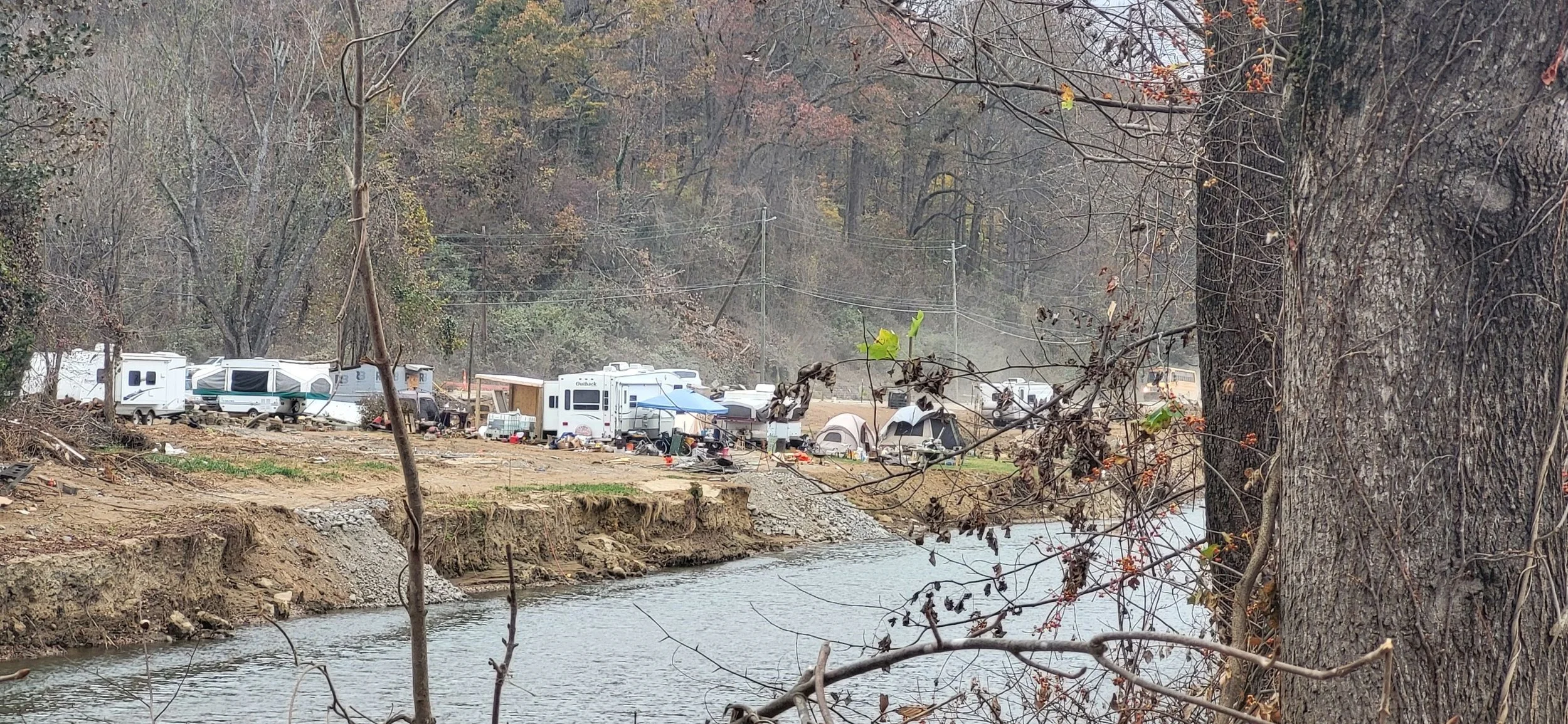Living Through the Devastation of Hurricane Helene in Asheville & Surrounding Areas
We are fortunate, but many still need help and have lost everything.
I wrote this article to bring awareness to the devastation in Western North Carolina, sharing my perspective of what we’ve gone through. I understand this might not be for everyone, so if you’re here for resources or images, feel free to scroll down to the sections below.
An Area in Swannanoa One Month After Hurricane Helene
-
During the Hurricane
On September 27, 2024, Hurricane Helene brought intense rainfall that triggered devastating floods in and around Asheville, North Carolina.
I partnered with a friend, Camille, to stay prepared in case things got bad. We stocked up on water and kept each other company, unaware that this small preparation would become essential. As the storm raged, we could feel it through the relentless wind and rain, but we had no idea of the extent of flooding. We stayed indoors, avoiding travel for fear of getting trapped or caught up in the chaos. The power went out first, then our water.
My phone connection became spotty. I could text, but messages barely got through, and I struggled to reach work to explain why I couldn’t log on remotely. Camille and I tried to keep calm, playing cards and chatting to pass the time. When the storm finally cleared, we ventured outside to check on her neighbors and assess the area, but service was still limited, making it hard to get accurate information.
One of the neighbors who had gone out, clearing fallen trees from the street, warned us that the roads were hazardous and some areas impassable. Carefully, we decided to explore. The Ingles grocery parking lot down the street was thick with mud and water, where people were wading through muck trying to salvage their cars. We saw fallen trees and mudslides, then a bridge overtaken by debris from a nearby house swept up by the creek.
Realizing the damage was far worse than we initially thought, we headed downtown to my apartment, combining resources and looking for news. Along the way, we saw homes submerged or swept away, scattered belongings floating along roads, and police with search teams surveying the turbulent Swannanoa River.
Luckily, the path to my apartment was clear. We navigated cautiously through intersections where streetlights had failed, wary of others who might not treat them as stop signs. My apartment seemed mostly unaffected except for the lack of power, internet, and water. I gathered essentials and we continued downtown. Asheville was desolate, with closed stores and fallen branches scattered throughout the streets. People were lined up outside the Wall Street Market, which was only taking cash and had limited supplies. Lacking cash, we kept searching for more resources.
We drove across the 240 highway, hoping to find Sam’s Club open (it would open later in the week to members and non-members). While Crossing the French Broad River the sight we saw was haunting—the River Arts District was submerged by the raging waters, erasing areas we’d casually walked just days before. Deciding to head back we experienced mostly deserted roads except for backed-up traffic near areas of damage.
Thankfully that night when we talked to the neighbors who said we could use their fire pit for cooking. After chopping some wood, cleaning up, and making the fire, we cooked canned green beans and chicken noodle soup. Having a hot meal gave us some relief but sleep didn’t come easily.
The next morning was tough. With hardly any way to contact others, we prioritized food and water conservation. Camille’s phone lost all signal, and mine was still erratic. We decided to use up fridge items before they spoiled, managing to cook a surprisingly good breakfast of eggs and bacon over the fire. One of our neighbors lent us a oven grate, which made cooking much easier than the night before.
We ventured out again to gather water for non-drinking purposes, like flushing toilets, knowing we’d need more soon. Following mud riddled bridges and debris-covered roads, we came upon a family salvaging their belongings from a toppled barn. We helped them retrieve what they could. Followed by listening to a couple who recounted how they’d ridden out the storm inside their home that had been swept from its foundation and into a tree.
After this our days settled into a routine of cooking, gathering water, and sharing resources with neighbors. We made trips to surrounding areas like Canton and Clayton, as well as Swannanoa and Asheville while seeking supplies. Gas became increasingly scarce; without reliable cell service, it was impossible to know which stations were open, and false or outdated information made things worse. Eventually, a station down the street opened, allowing us to fill our tanks and prepare to leave. Six days of near-isolation wore on us physically and mentally, leaving us drained.
Even now, there is no true break. Asheville and its surrounding areas still need help, donations, and resources as many have lost their homes and possessions.
-
I want to thank all those who helped during this time. Special thanks to Camille for her foresight and kindness in preparing for the worst. Her planning and willingness to share made a huge difference in my situation. Thank you, Camille, for everything you’ve done.
Swannanoa & Swannanoa River, NC
Clyde & Canton
Down Town Asheville
River Arts District & French Broad River
Essential Flood Relief Resources for Asheville & Surrounding Areas
Volunteering & Donations
Articles & Stories
"The Devastation of Hurricane Helene" by Charlotte Secrist, published on the website "The Voice"
“Asheville family - including 7-year-old - swept to deaths by Helene's floodwaters” by Isabel Hughe, published on the website “Citizen-Times”
Stories of Survival | Asheville-area family rescued from Helene's flood waters on their roof
‘Hope in humanity': How North Carolina is recovering after Helene | USA TODAY
-
Atlanta Journal-Constitution Articles October 8th, 2024
_



